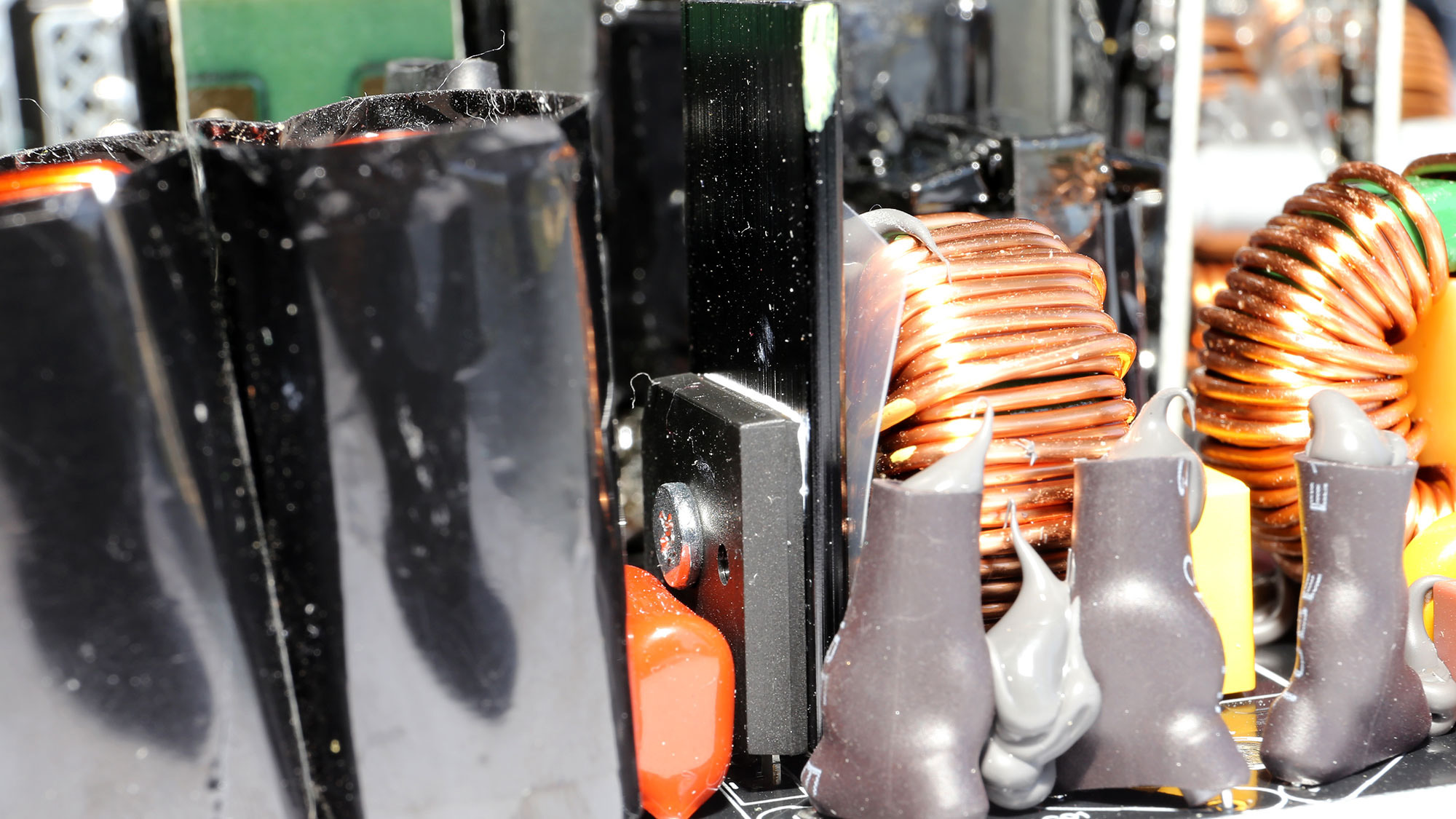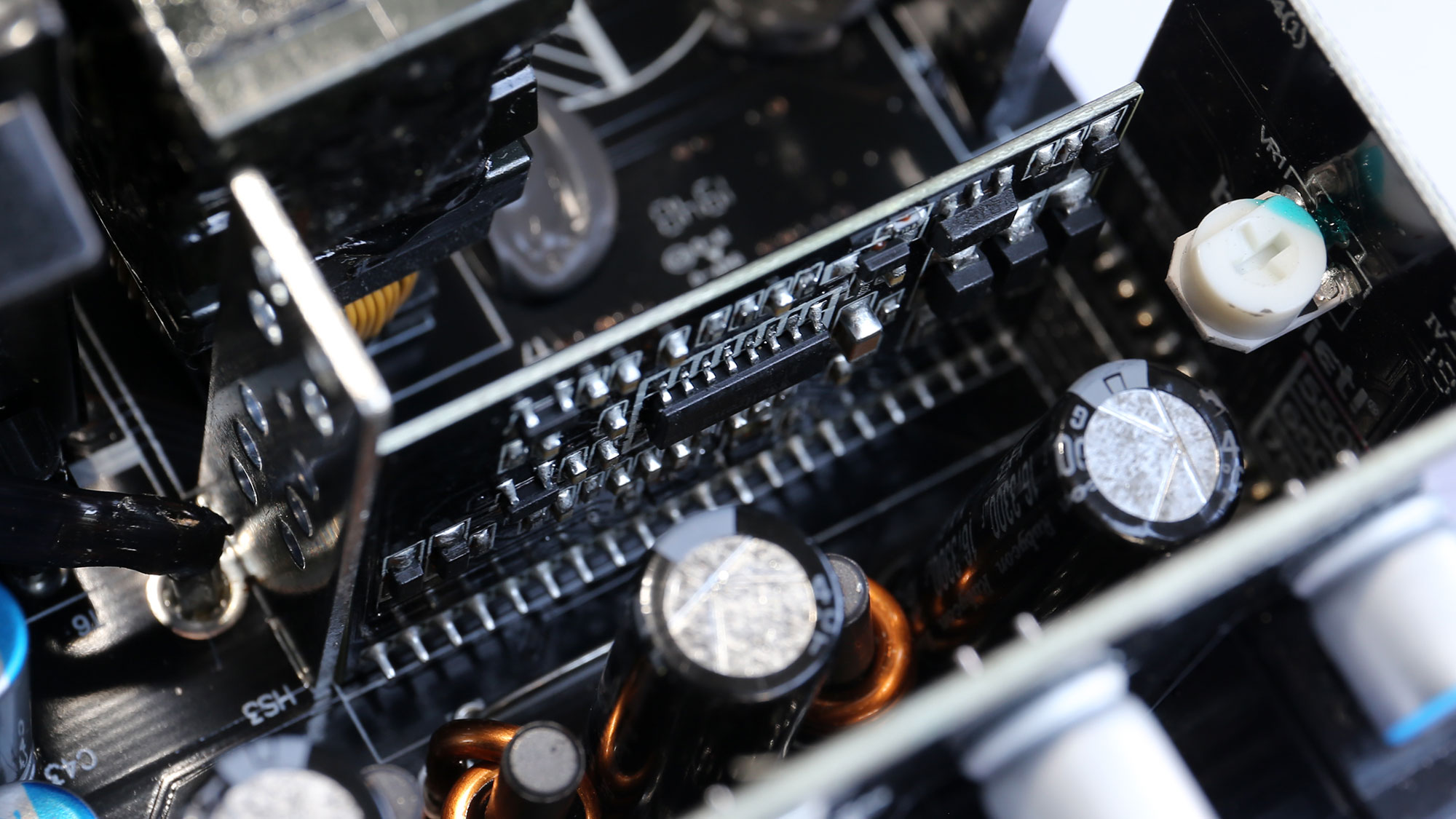Tom's Hardware Verdict
The Straight Power 11 Platinum model with 550W max power is silent, achieves satisfactory overall performance and uses quality parts. The performance difference with the previous model is small, though.
Pros
- +
Full power at 45 degrees Celsius
- +
Silent operation
- +
Efficient
- +
High-quality components
- +
Long hold-up time
- +
Fully modular
- +
Compatible with the alternative sleep mode
- +
Adequate distance between the peripheral connectors
Cons
- -
Low overall performance difference with the previous model
- -
The protection features are not configured correctly
- -
No bypass relay in the inrush current protection circuit
- -
High Vampire Power
- -
Efficiency at 5VSB is much lower compared to the previous model
- -
Lower than 70% efficiency with 2% load
- -
Not compatible with the alternative sleep mode
Why you can trust Tom's Hardware
The new Straight Power 11 Platinum model with 550W max power has a small overall performance difference with the previous Gold model, despite the new platform that FSP used. To make matters worse, it uses an inferior 5VSB circuit, with notably lower efficiency levels. The competition is hard with the Fractal Design Ion+ 560P and the Seasonic Focus Platinum model with similar capacity being better choices. The Corsair RM550x, our best power supply pick in the 550W category, also achieves higher performance despite the lower efficiency certification in the 80 PLUS scheme (in Cybenetics, both the RM550x and the Straight Power 11 Platinum 550 have the same efficiency rating, ETA-A).
There are two Straight Power (SP) 11 lines in be quiet's portfolio right now, one with Gold-certified members and capacities ranging from 450W to 1000W and one with Platinum models and 550W up to 1200W max power. We don't know, yet, if the older Straight Power 11 line will remain in the market, or will be replaced by the new one. For the moment, both are listed on the brand's official page.
Besides the different min and max capacities of their models and the efficiency certifications, another significant difference between the SP Gold and Platinum lines is the new platform that the new models utilize. The OEM remains FSP, which uses a fresh design featuring a full-bridge topology instead of the half-bridge that the older models used. Moreover, only the SP Platinum 550W model is equipped with a single EPS connector, with all the rest featuring two of those connectors. In the SP Gold line, the 450W, 550W, and 650W models come with a single EPS connector.


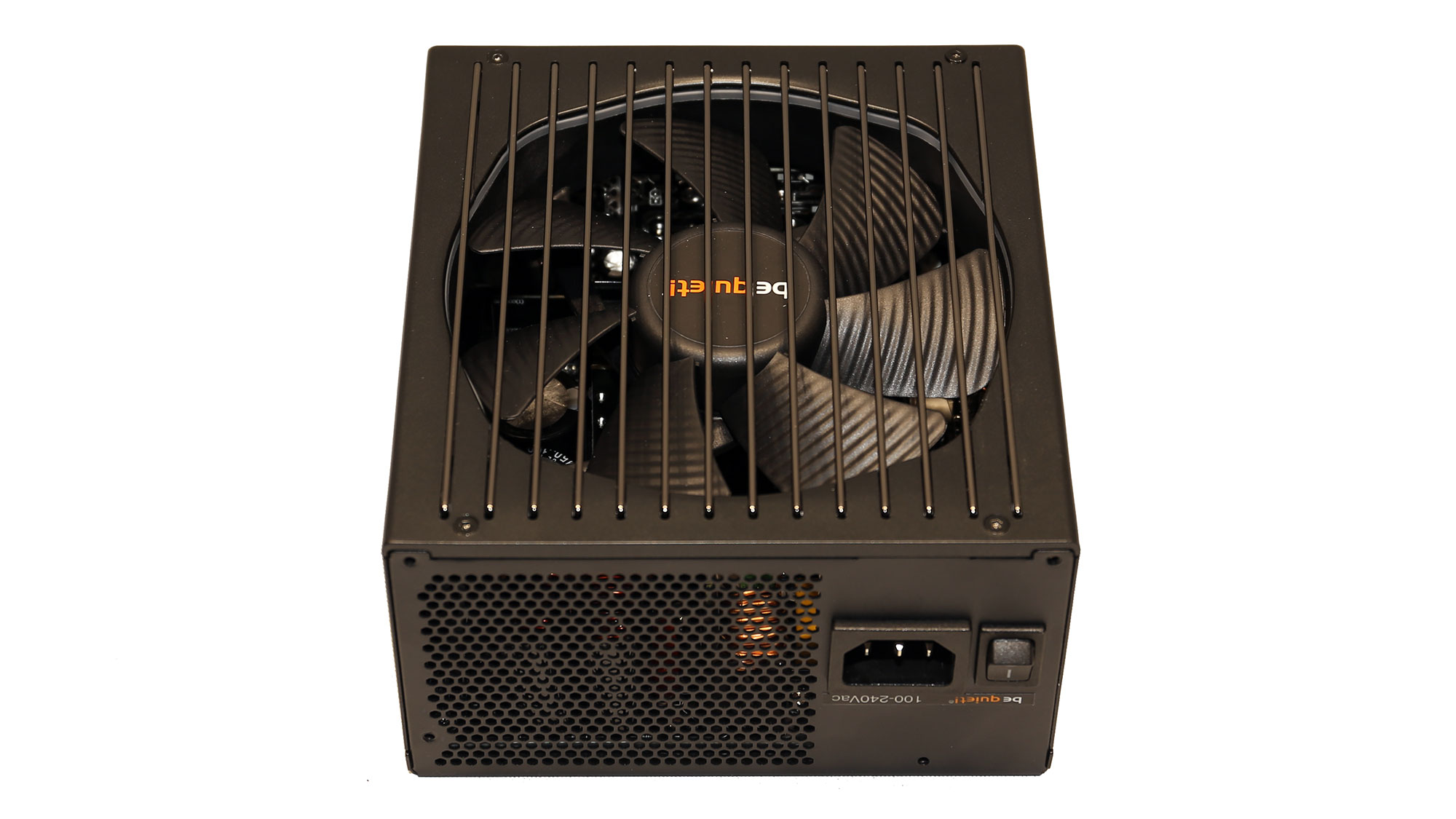
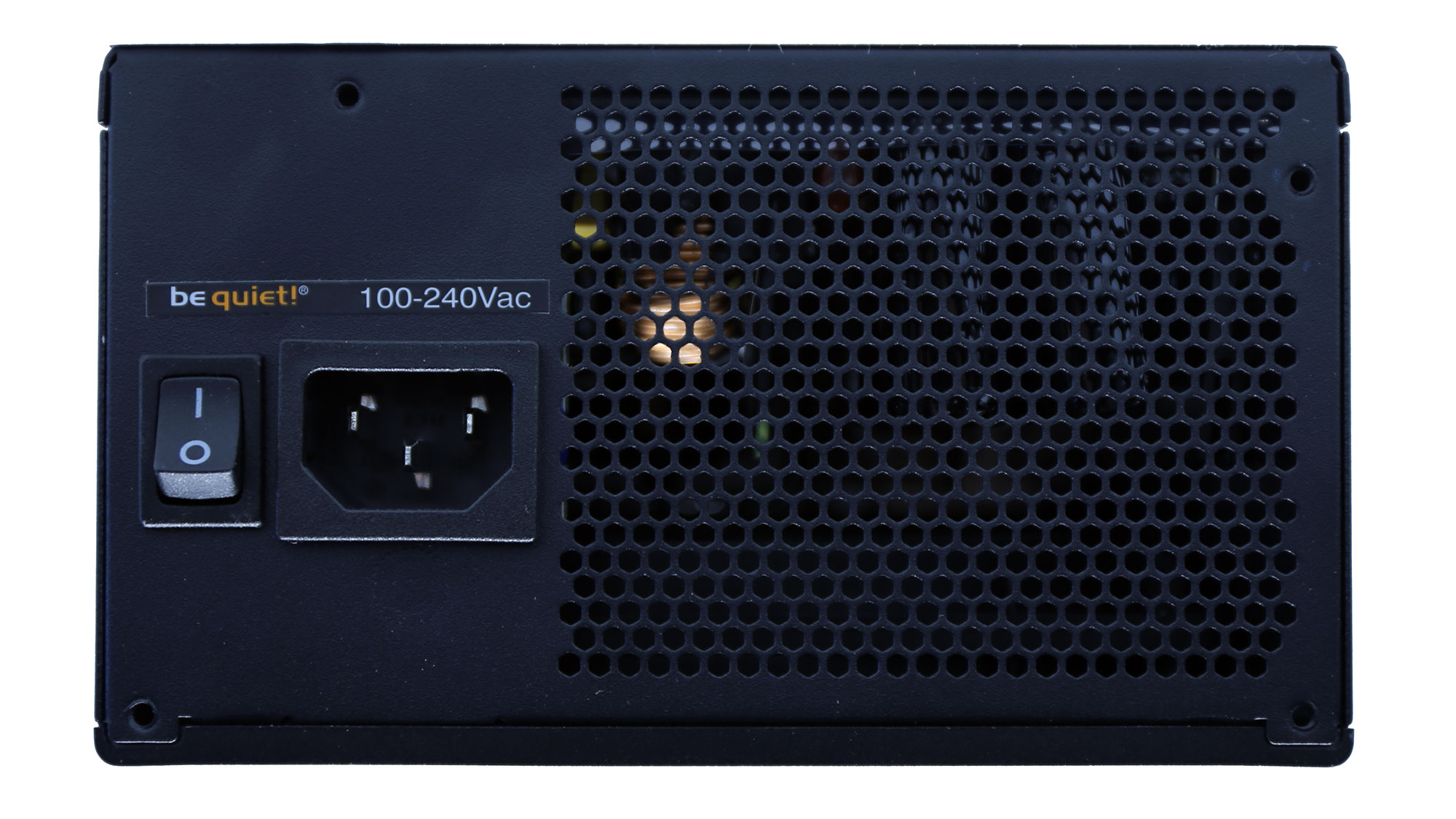
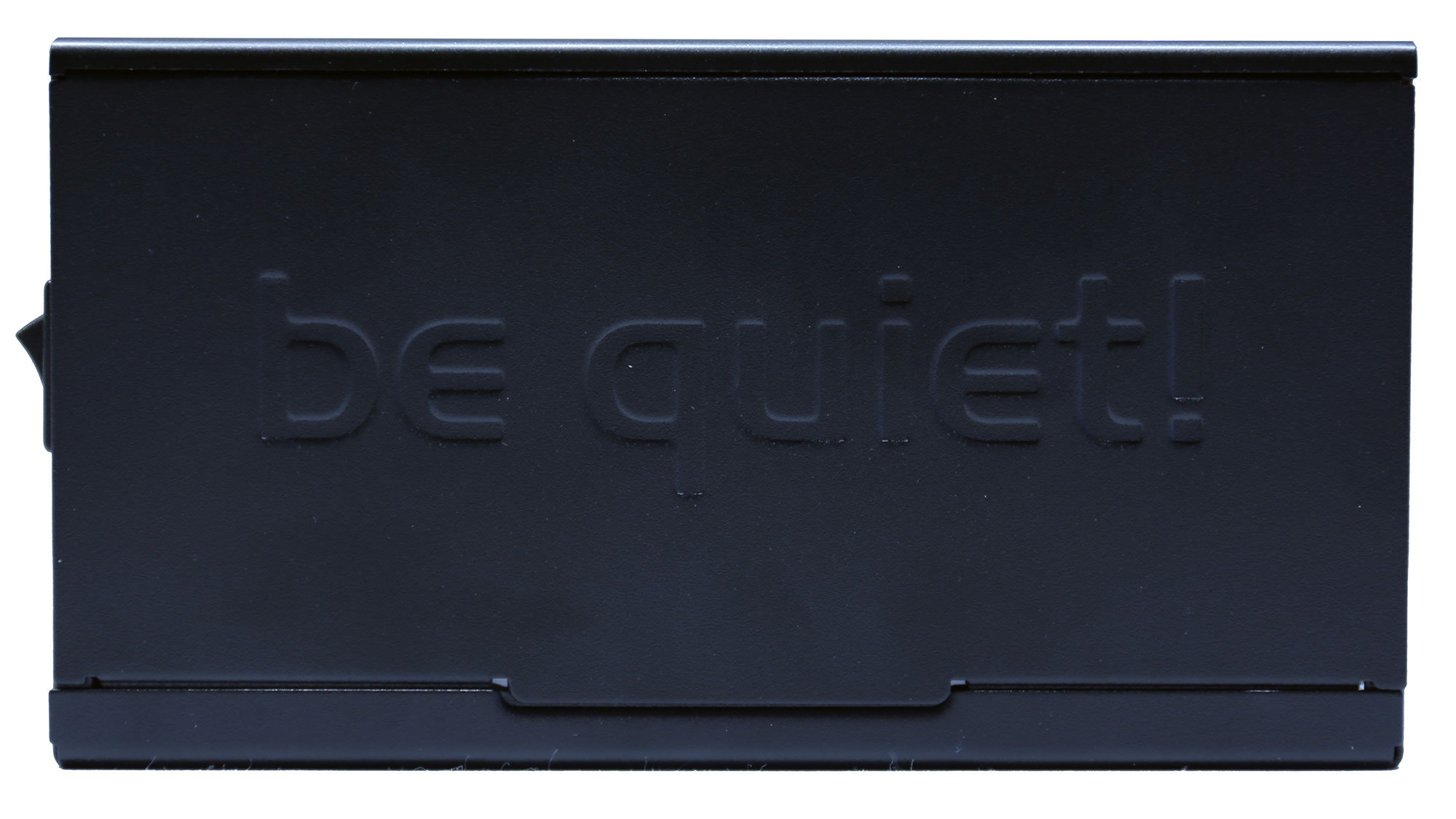
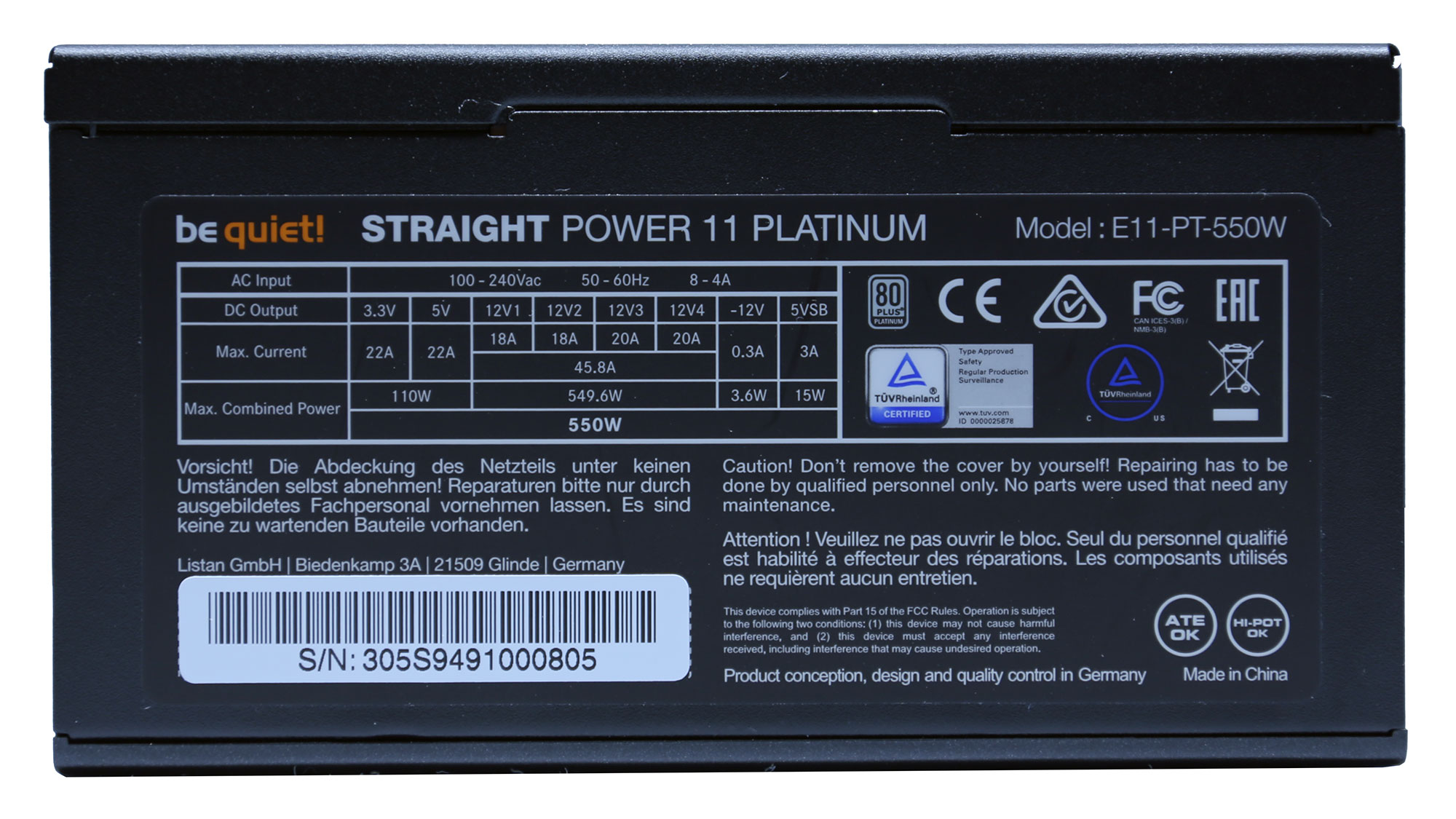
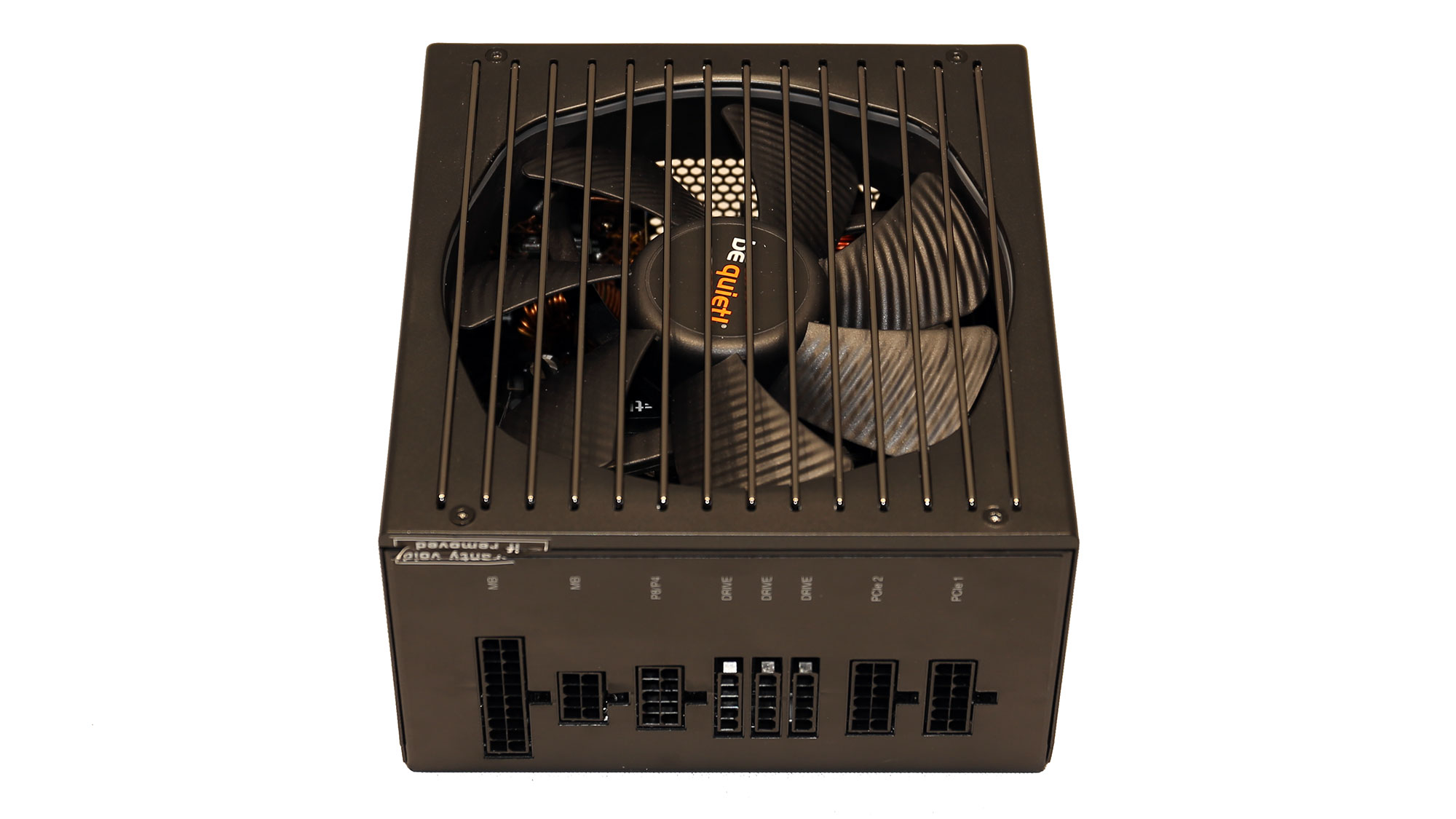
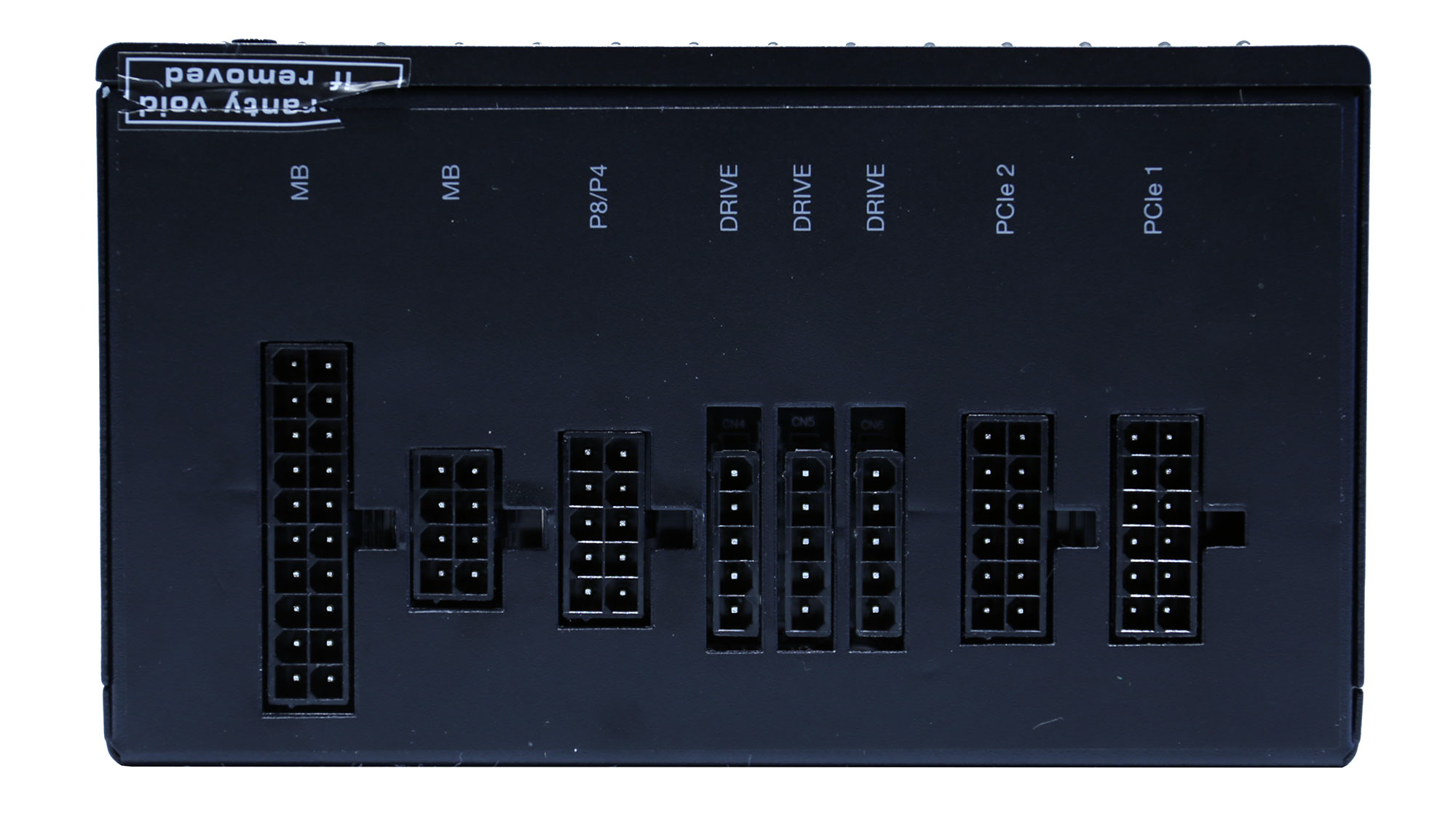
The Straight Power 11 Platinum with 550W max power is the smallest member of the line. It features a fully modular cable design along with a high-quality Silent Wings 3 fan, which uses a fluid dynamic bearing for lower noise output and increased lifetime. According to be quiet!, the funnel-shaped fan inlet increases the airflow, boosting the cooling performance. Moreover, all the internal components are of high quality, including Japanese capacitors that belong to good lines and not mainstream ones.
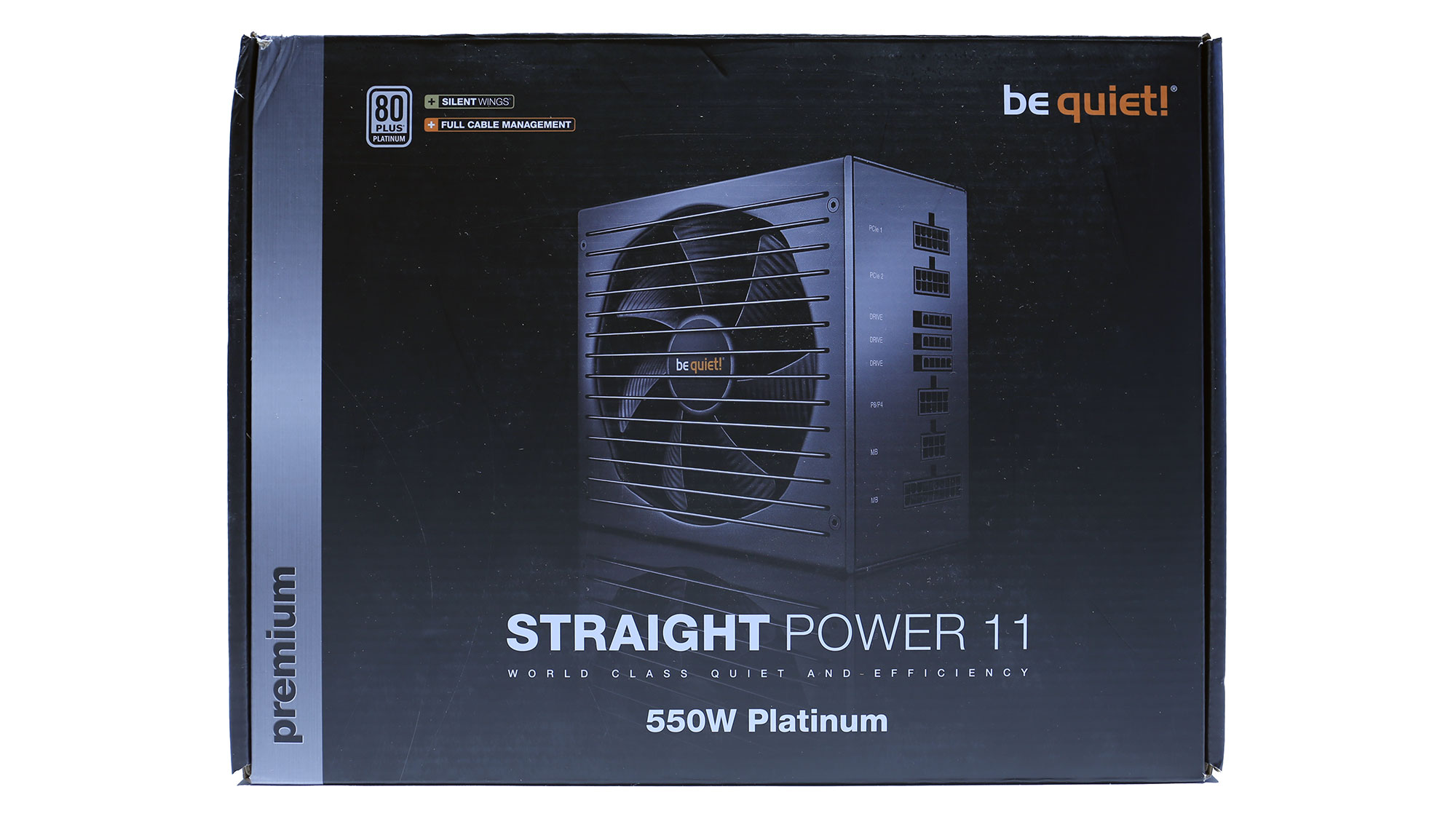


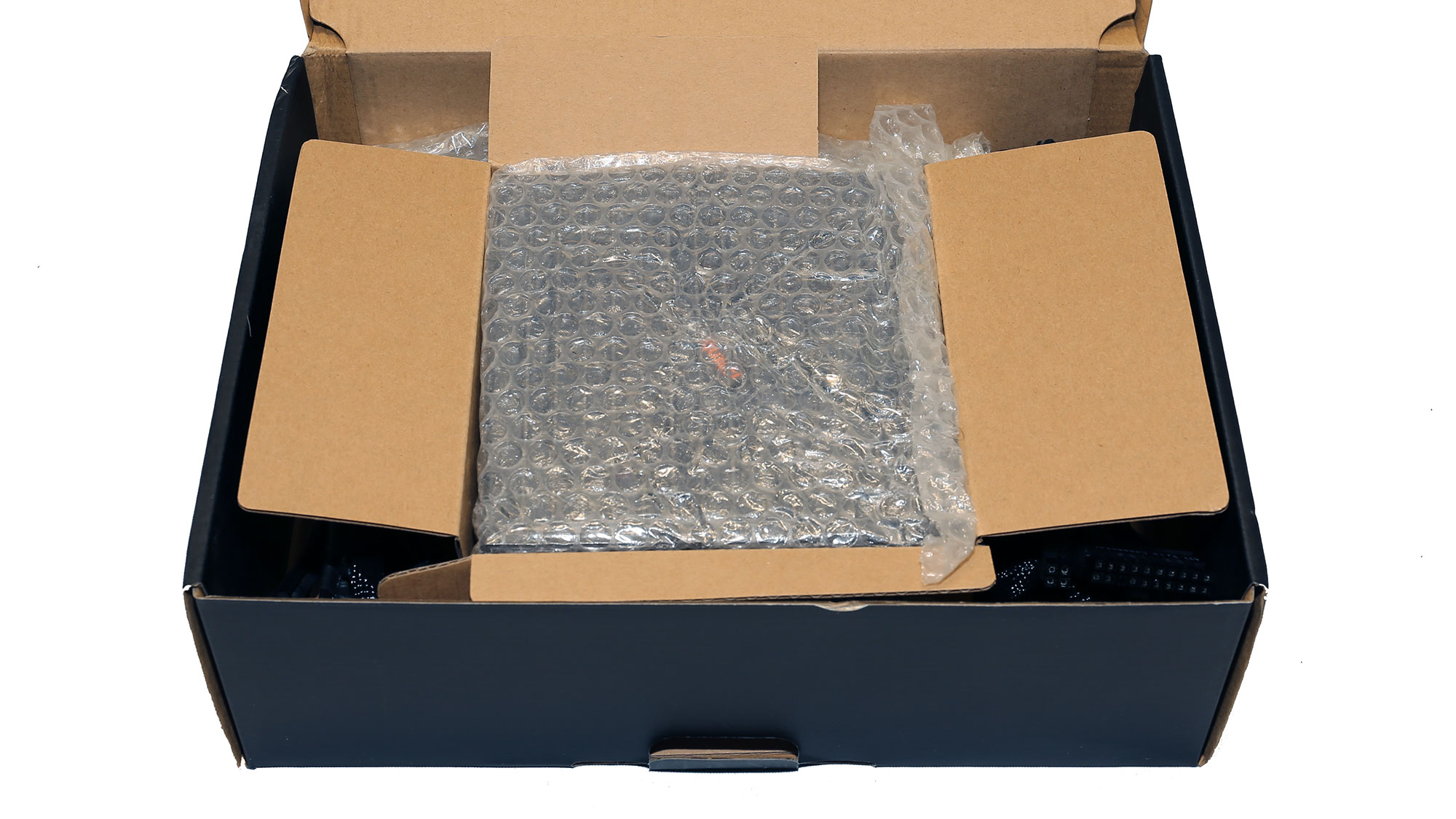
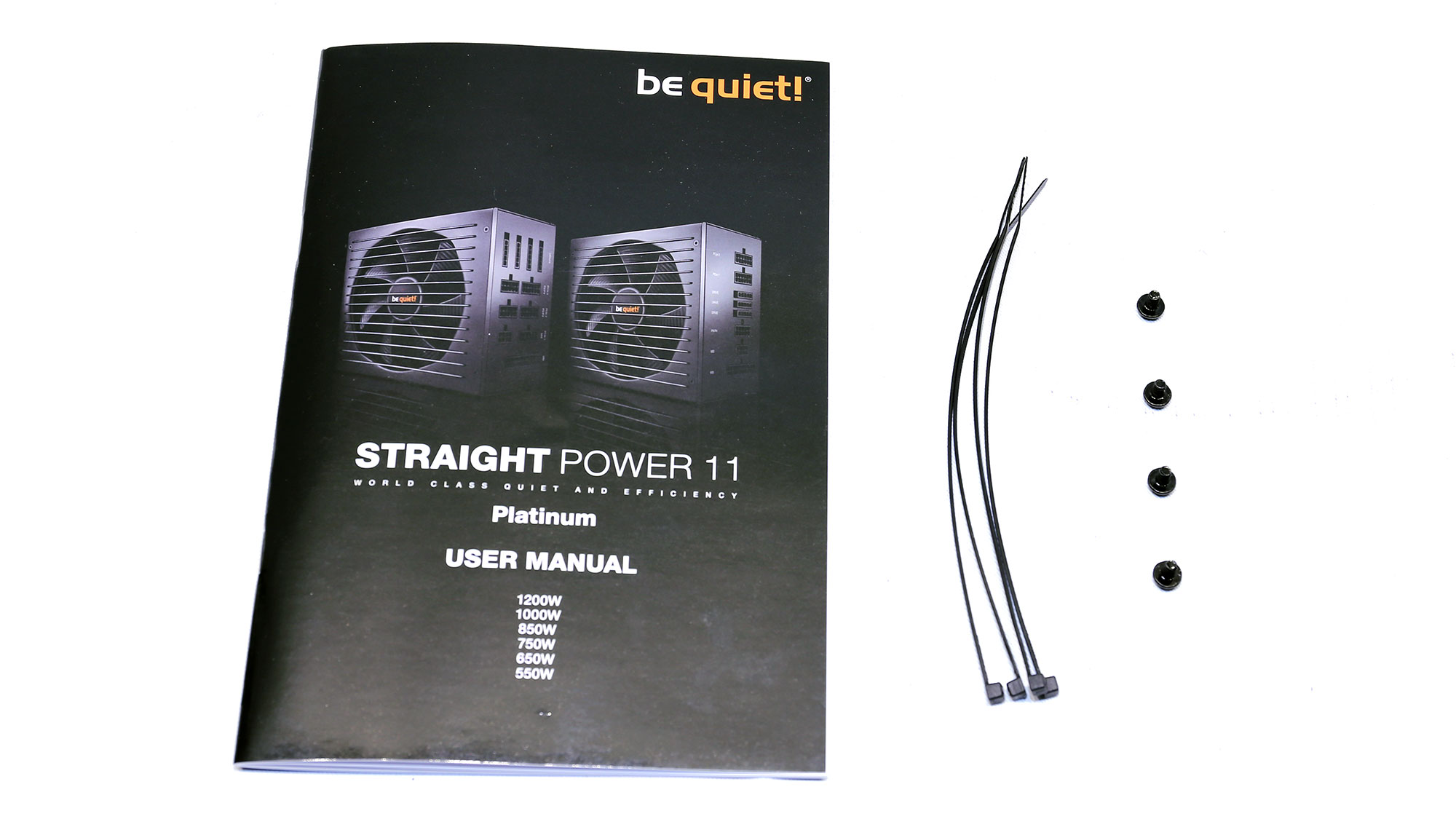

Specifications
|
Manufacturer (OEM) |
FSP |
|
Max. DC Output |
550W |
|
Efficiency | 80 PLUS Platinum, *ETA-A (88-91%) |
|
Noise | *LAMBDA-A++ (<15 dB[A]) |
|
Modular |
✓ (Fully) |
|
Intel C6/C7 Power State Support |
✓ |
|
Operating Temperature (Continuous Full Load) |
0 - 40°C |
|
Over Voltage Protection |
✓ |
|
Under Voltage Protection |
✓ |
|
Over Power Protection |
✓ |
|
Over Current (+12V) Protection |
✓ |
|
Over Temperature Protection |
✓ |
|
Short Circuit Protection |
✓ |
|
Surge Protection |
✓ |
|
Inrush Current Protection |
✓ |
|
Fan Failure Protection |
✗ |
|
No Load Operation |
✓ |
|
Cooling |
135mm Fluid Dynamic Bearing Fan (BQSIW3-13525-MF) |
|
Semi-Passive Operation |
✗ |
|
Dimensions (W x H x D) |
150 x 85 x 160mm |
|
Weight |
1.66 kg (3.66 lb) |
|
Form Factor |
ATX12V v2.4, EPS 2.92 |
|
Warranty |
5 Years |
* Not certified yet by Cybenetics. According to our measurements, which are in line with the Cybenetics respective guidelines, the PSU falls into these efficiency and noise categories.

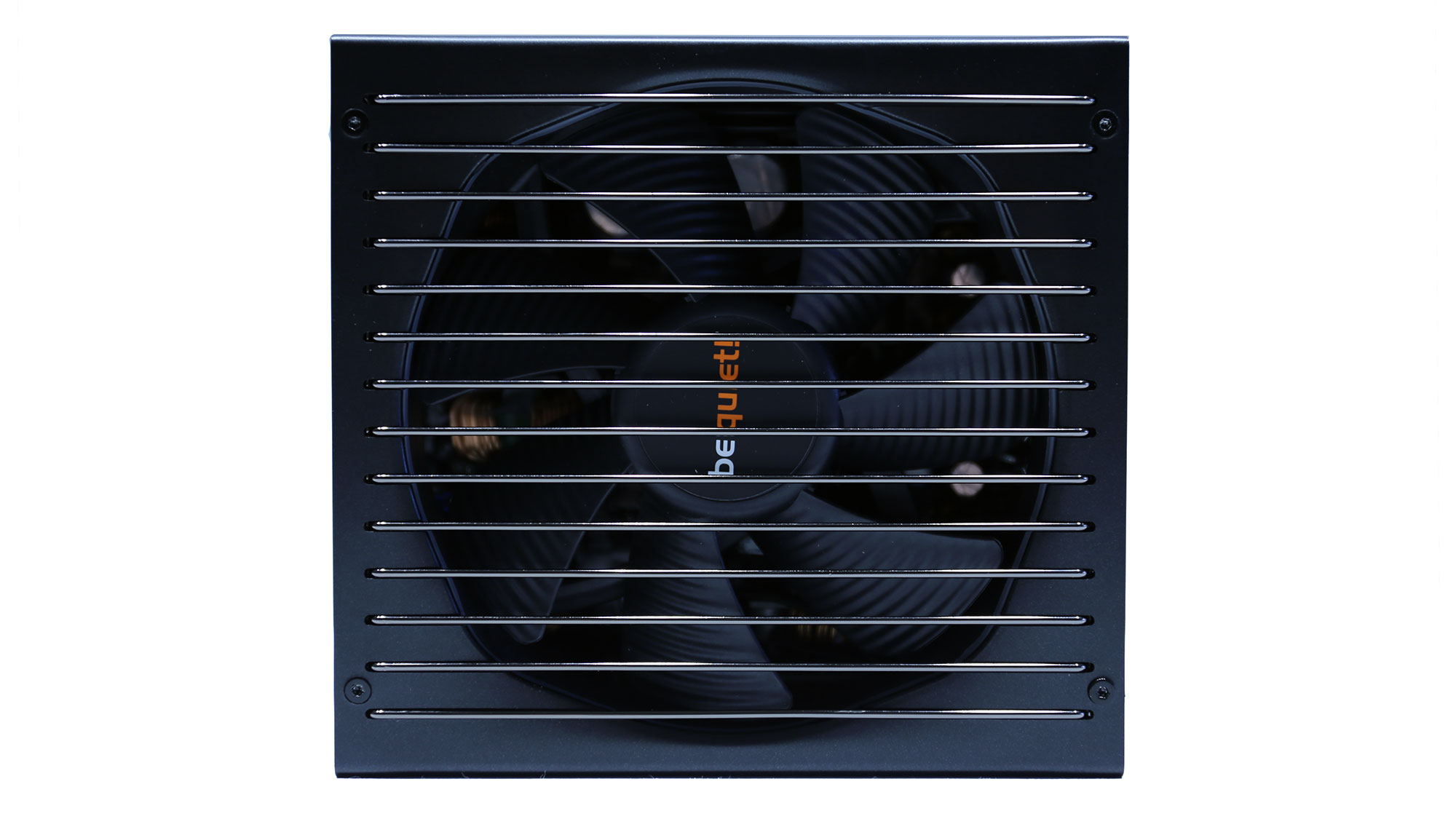
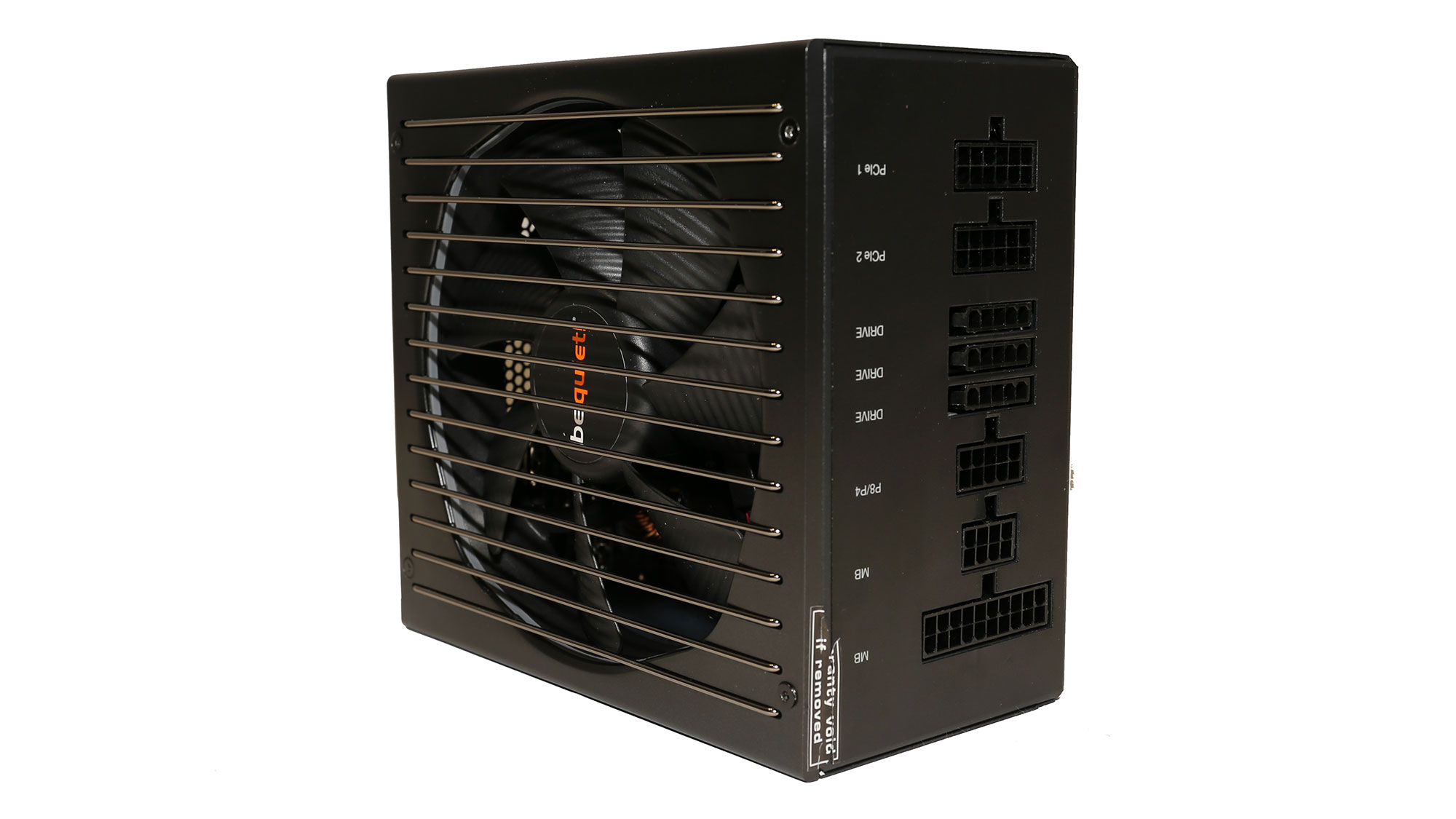
Power Specifications
| Rail | 3.3V | 5V | 12V1 | 12V2 | 12V3 | 12V4 | 5VSB | -12V | |
|---|---|---|---|---|---|---|---|---|---|
| Max. Power | Amps | 22 | 22 | 18 | 18 | 20 | 20 | 3 | 0.3 |
| 45.8 | |||||||||
| Row 2 - Cell 0 | Watts | 110 | 549.6 | 15 | 3.6 | ||||
| Total Max. Power (W) | 550 | Row 3 - Cell 9 |
Power Distribution
| Rail | Connectors |
|---|---|
| 12V1 | ATX, Peripheral |
| 12V2 | EPS |
| 12V3 | PCIe1 |
| 12V4 | PCIe2 |
Cables and Connectors
| Description | Cable Count | Connector Count (Total) | Gauge | In Cable Capacitors |
|---|---|---|---|---|
| ATX connector 20+4 pin (600mm) | 1 | 1 | 16-22AWG | No |
| 4+4 pin EPS12V (700mm) | 1 | 1 | 16AWG | No |
| 6+2 pin PCIe (600mm) | 2 | 2 | 18AWG | No |
| SATA (550mm+150mm+150mm+150mm) | 1 | 4 | 18AWG | No |
| SATA (550mm+150mm+150mm) / 4-pin Molex (+150mm) | 1 | 3 / 1 | 18AWG | No |
| SATA (550mm+150mm) / 4-pin Molex (+150mm+150mm) | 1 | 2 / 2 | 18AWG | No |
| FDD Adapter (150mm) | 1 | 1 | 22AWG | No |
| AC Power Cord (1360mm) - C13 coupler | 1 | 1 | 18AWG | - |
There is no need for two EPS connectors in such a low-capacity power supply. The amount of PCIe is sufficient and the same goes for the peripheral connectors.
It is weird to see 16AWG gauges in a 550W PSU, but we won't complain, of course, since they allow for lower voltage drops. It is just that the production cost slightly increases, with those cables. Finally, all cables are quite long and the distance between the peripheral connectors is adequate.
Get Tom's Hardware's best news and in-depth reviews, straight to your inbox.
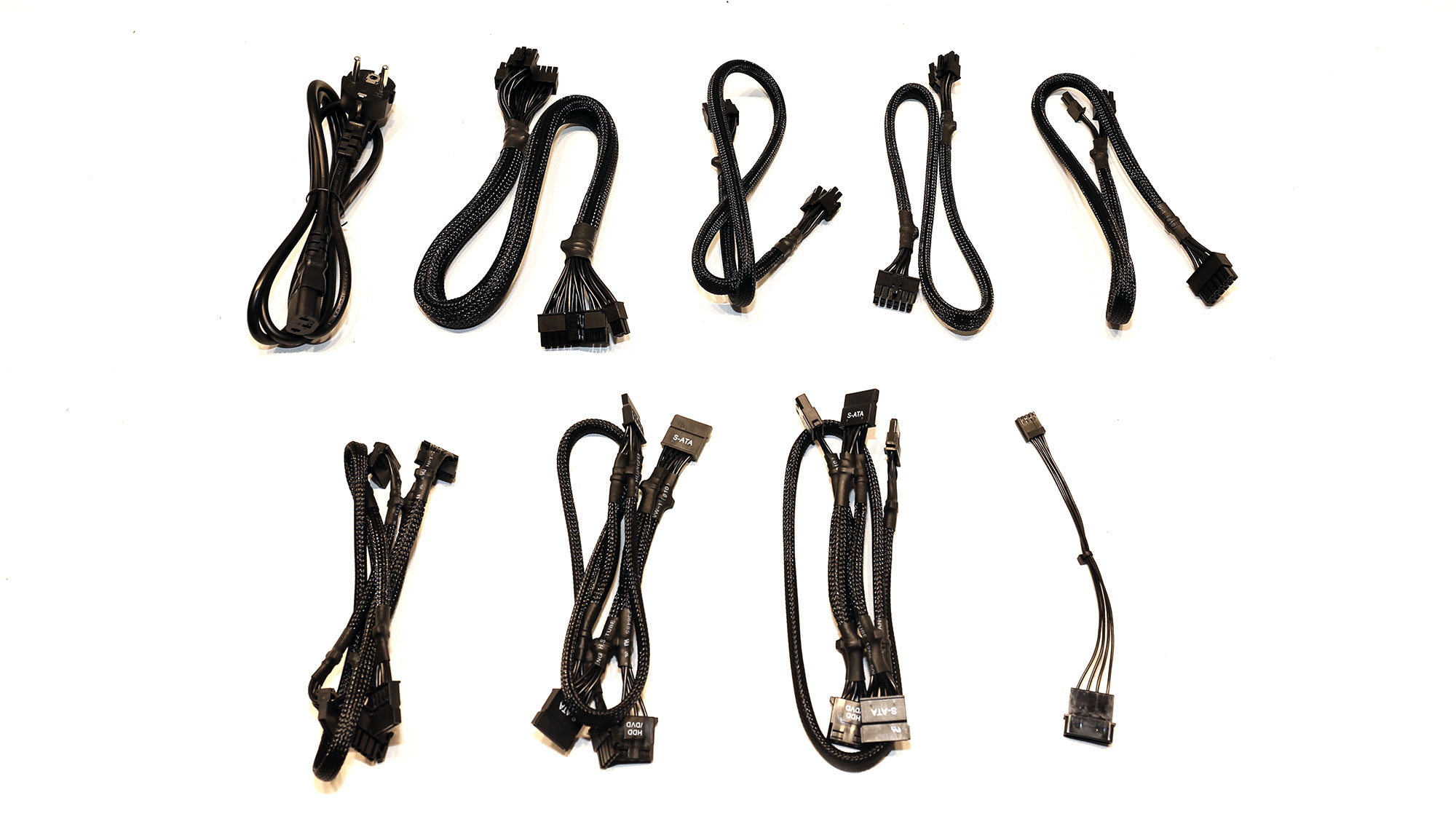
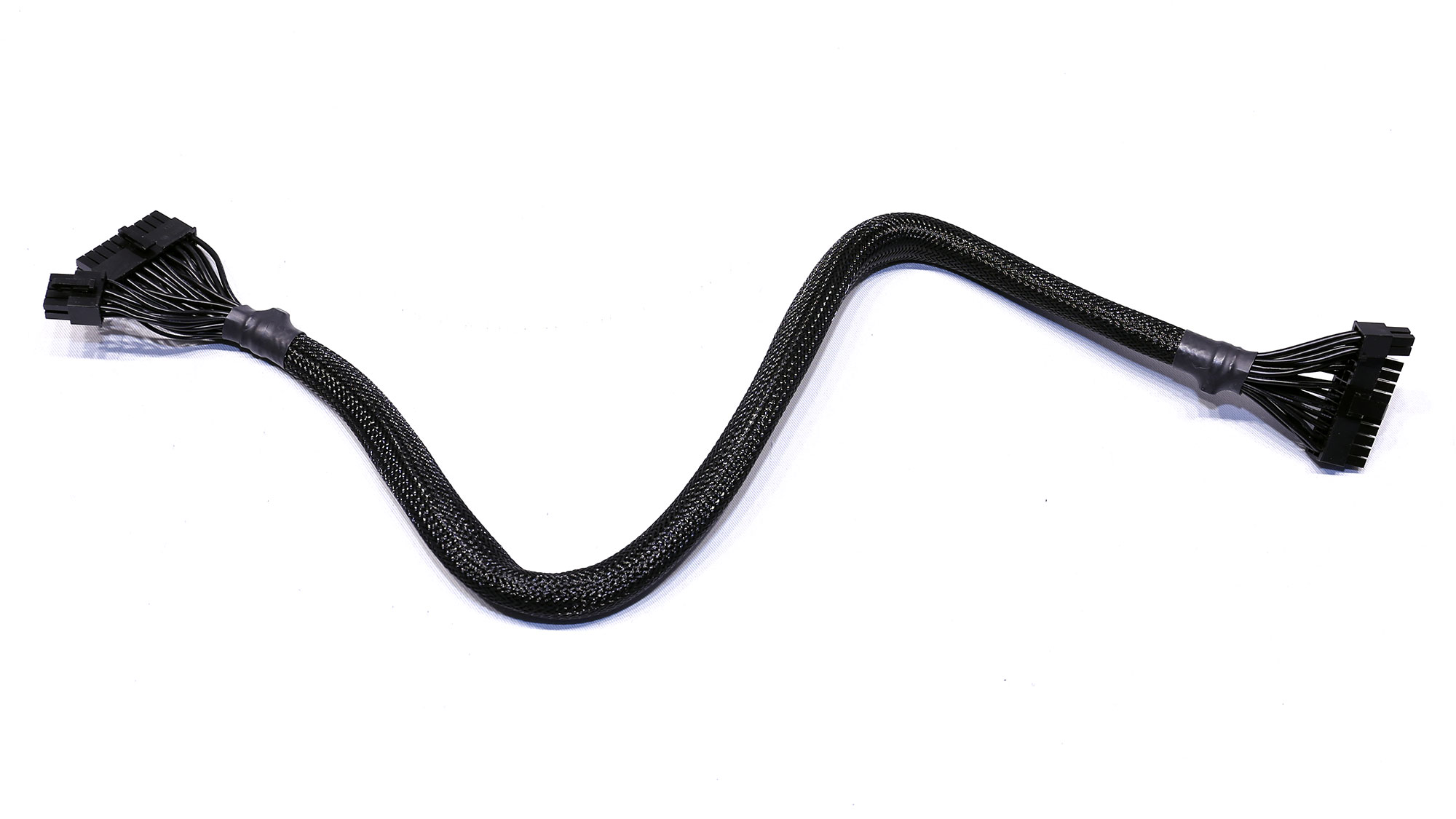
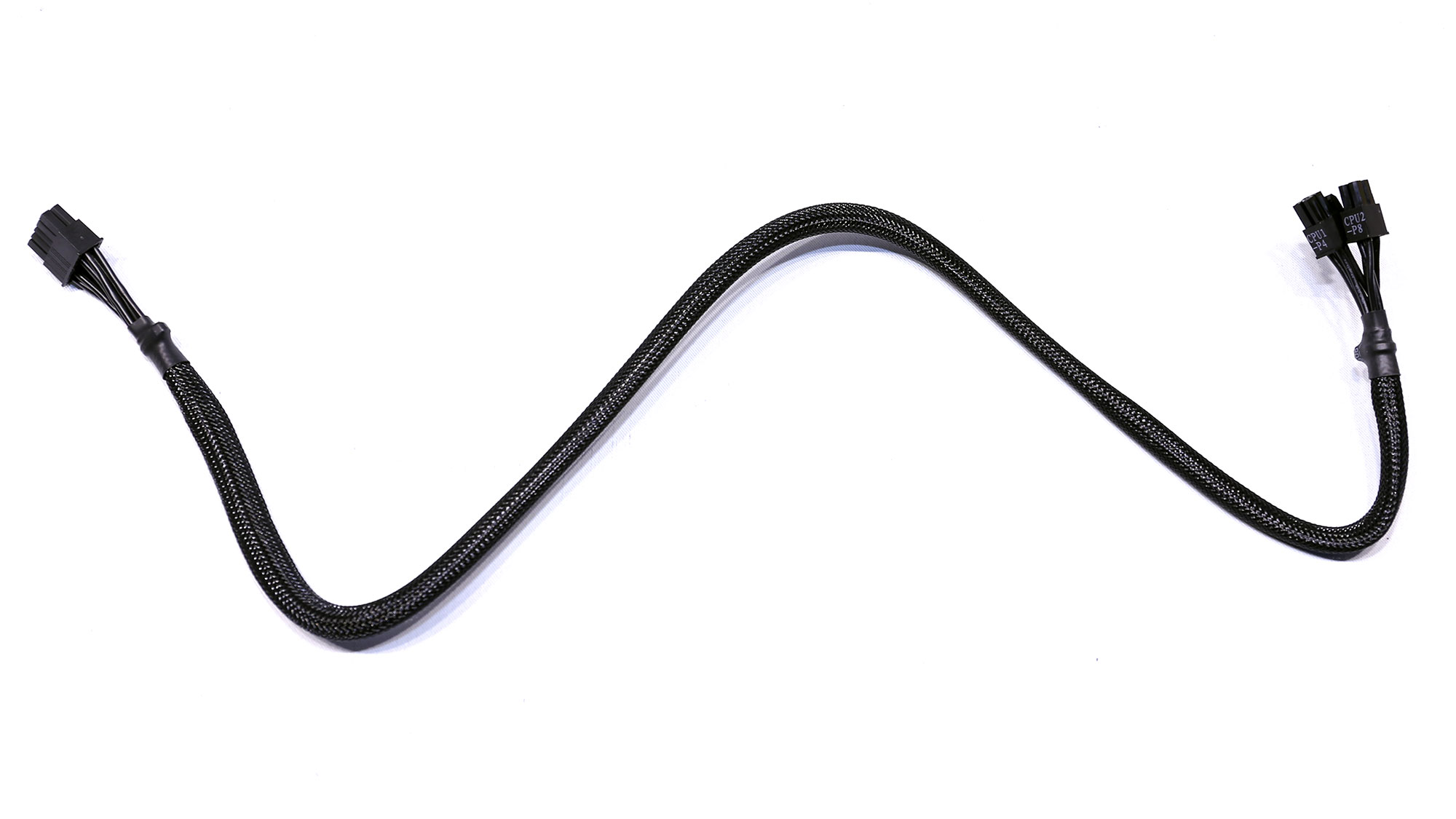


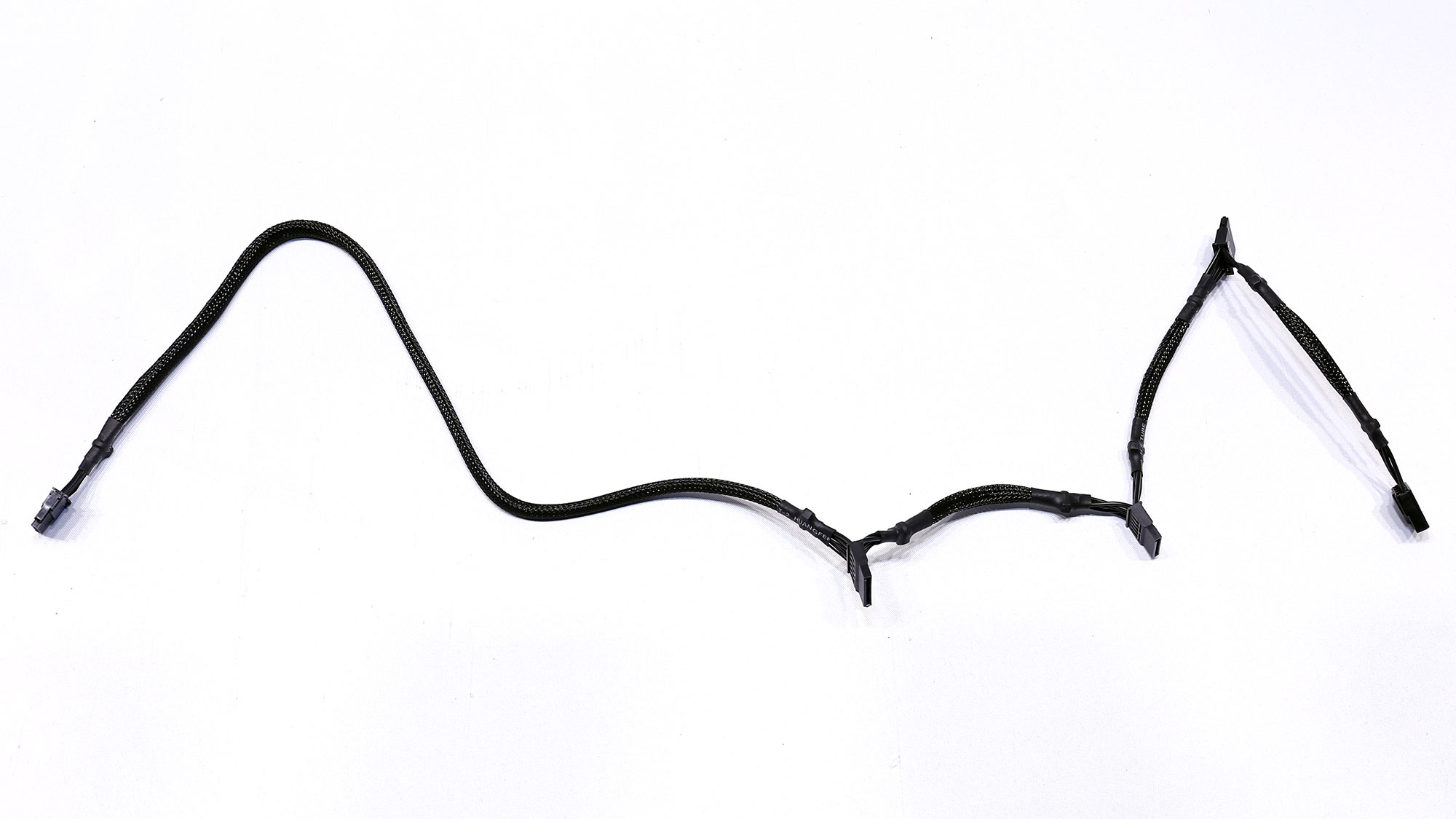
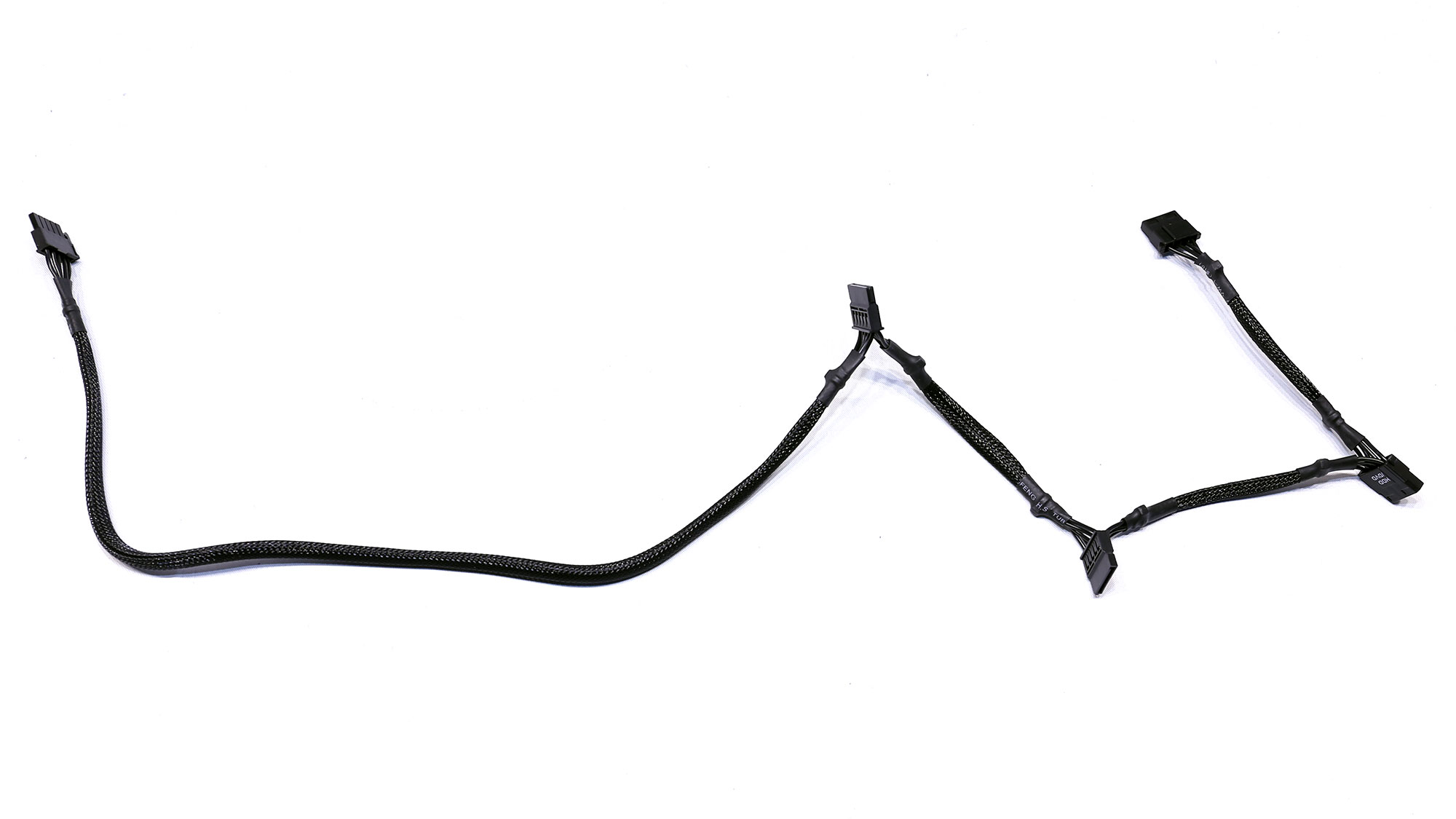
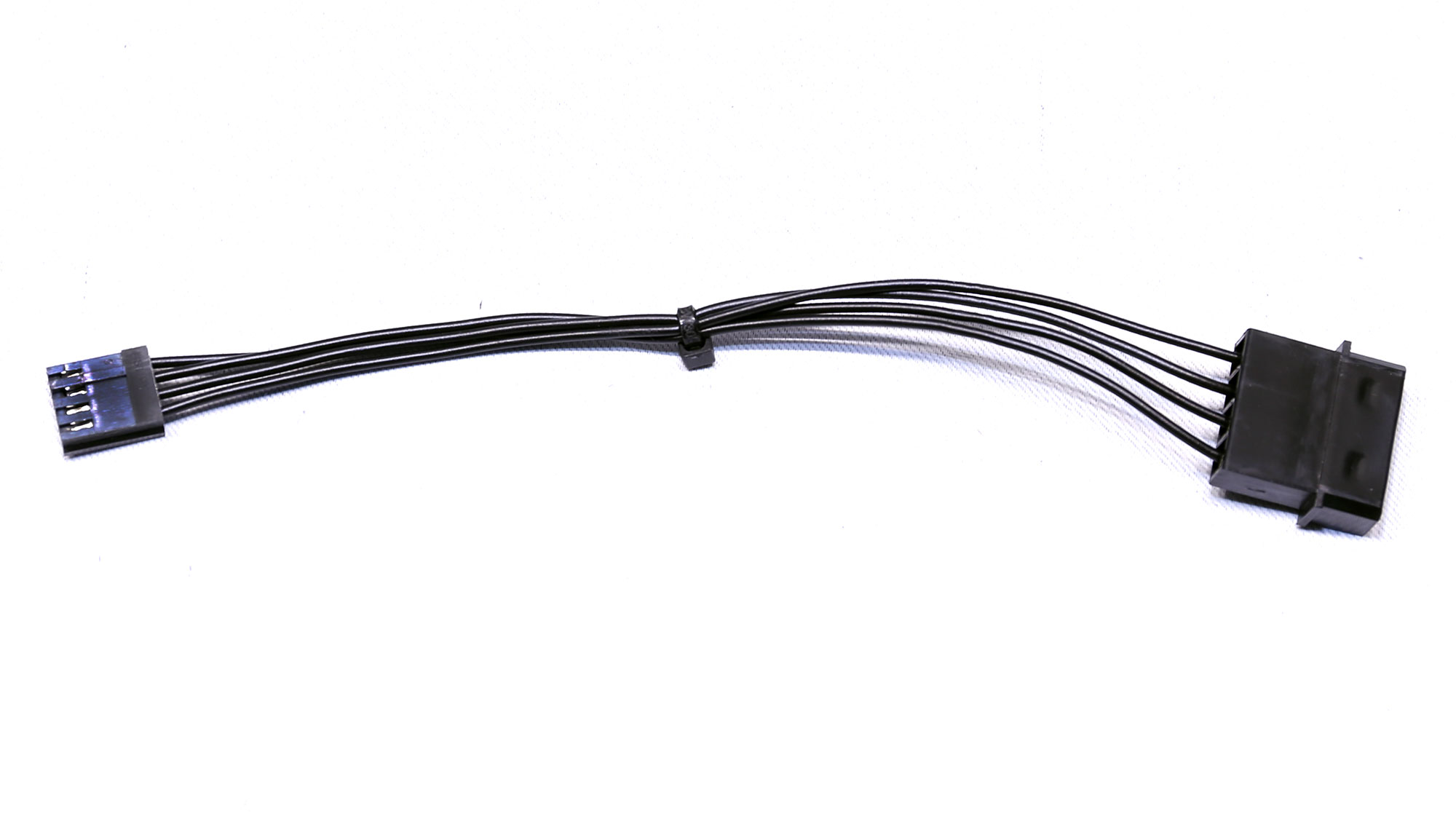
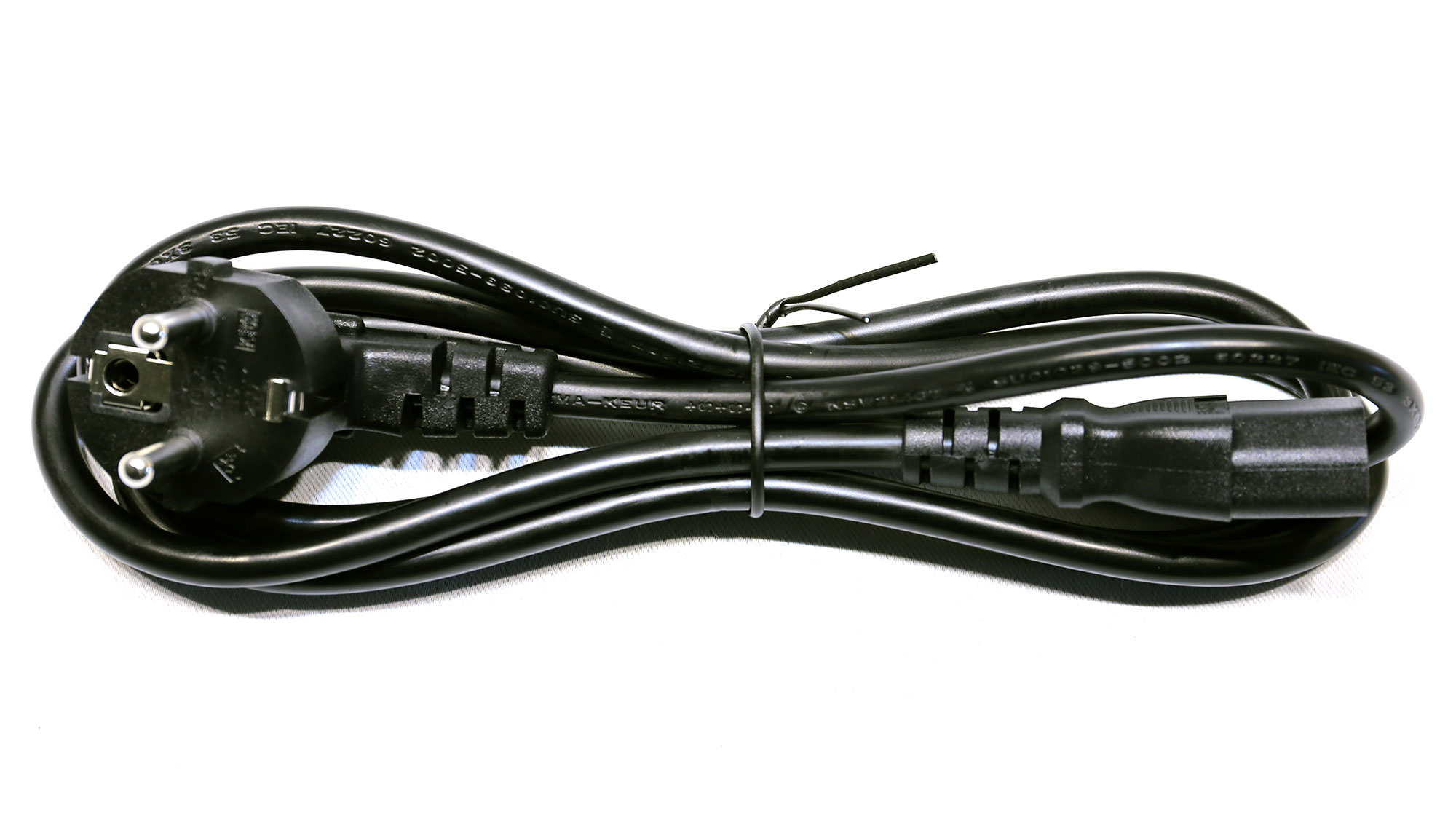
Component Analysis
We strongly encourage you to have a look at our PSUs 101 article, which provides valuable information about PSUs and their operation, allowing you to better understand the components we're about to discuss.
| Header Cell - Column 0 | General Data |
|---|---|
| Manufacturer (OEM) | FSP |
| PCB Type | Double Sided |
| Row 2 - Cell 0 | Primary Side |
| Transient Filter | 5x Y caps, 2x X caps, 2x CM chokes, 1x MOV |
| Inrush Protection | NTC Thermistor (SCK-018) |
| Bridge Rectifier(s) | 1x |
| APFC MOSFETs | 2x ROHM R6020KNX (600V, 20A, 0.196Ohm) |
| APFC Boost Diode | 1x Infineon IDH04G65C6 (650V, 4A @ 150°C) |
| Hold-up Cap(s) | 1x Rubycon (450V, 220uF, 3,000h @ 105°C, MXK) & 1x Rubycon (450V, 180uF, 5,000h @ 105°C, VXH) |
| Main Switchers | 4x STMicroelectronics STF18N60M2 (650V, 8A @ 100°C, 0.28Ohm) |
| IC Driver |
2x Silicon Labs Si8233BD |
| APFC Controller | Champion CM6500UNX |
| Resonant Controller | Champion CM6901X |
| Topology | Primary side: Full-Bridge & LLC converter Secondary side: Synchronous Rectification & DC-DC converters |
| Row 14 - Cell 0 | Secondary Side |
| +12V MOSFETs | 4x Infineon BSC014N04LS (40V, 100A @ 100°C, 1.4mOhm) |
| 5V & 3.3V | DC-DC Converters: 8x Advanced Power AP3R303GMT (30V, 25A @ 70°C, 3.3mOhm) PWM Controllers: 2x ANPEC APW7164 |
| Filtering Capacitors | Electrolytic: 4x Nippon Chemi-Con (4-10,000h @ 105°C, KY), 2x Nippon Chemi-Con (5-6,000h @ 105°C, KZH), 4x Rubycon (3-6,000h @ 105°C, YXG), 1x Rubycon (6-10,000h @ 105°C, ZLH) Polymer: 4x FPCAP, 18x United Chemi-Con |
| Supervisor IC | Weltrend WT7527 (OCP, OVP, UVP, SCP, PG) |
| Fan Model | be quite! BQ SIW3-13525-MF (135mm, 12V, 0.4A, Fluid Dynamic Bearing Fan) |
| Row 20 - Cell 0 | 5VSB Circuit |
| Rectifier | 1x Silan Microelectronics SVF3N80F FET (800V, 1.9A @ 100°C, 4.8Ohm) |
| Standby PWM Controller | Leadtrend LD7750R |
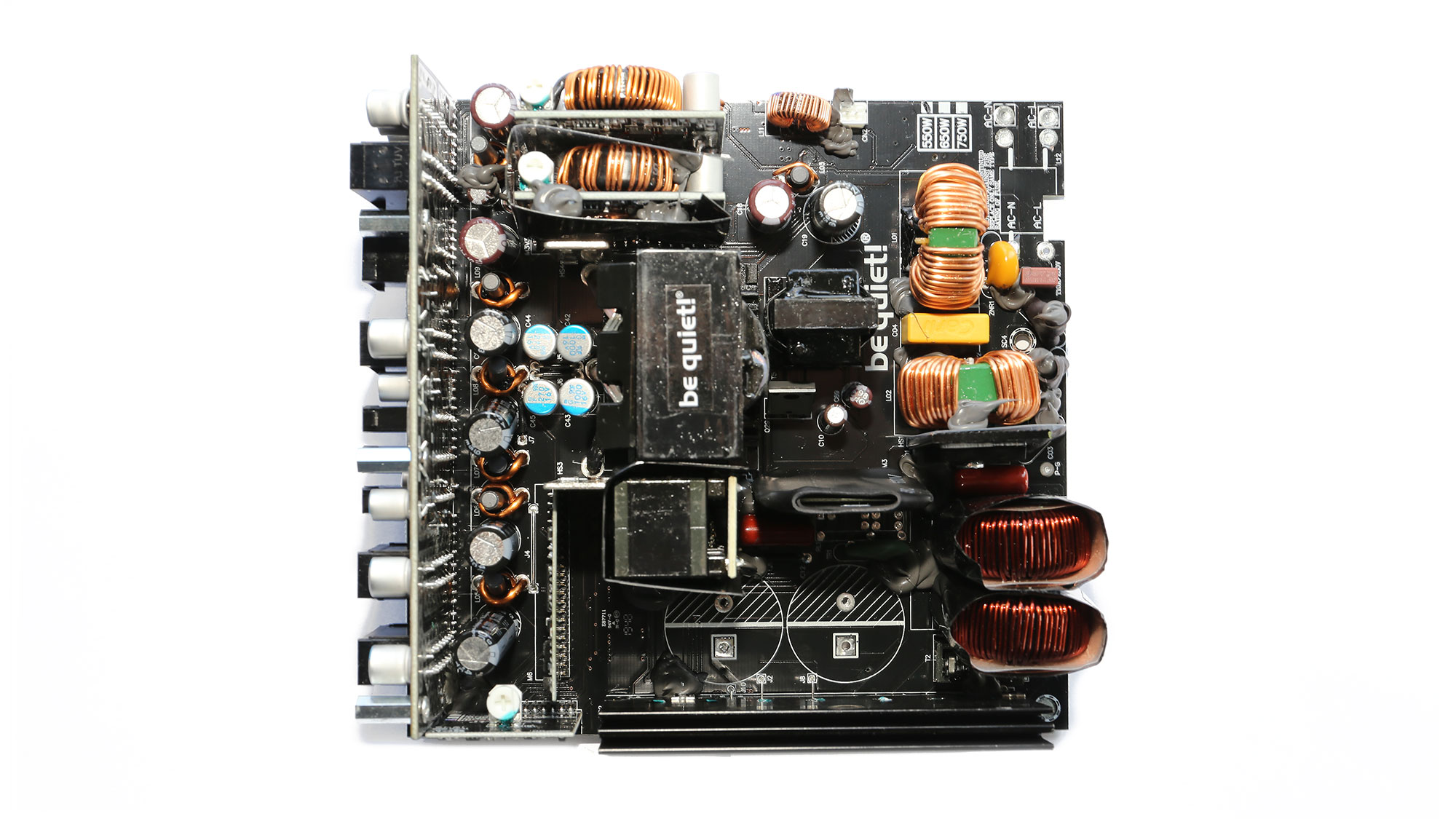

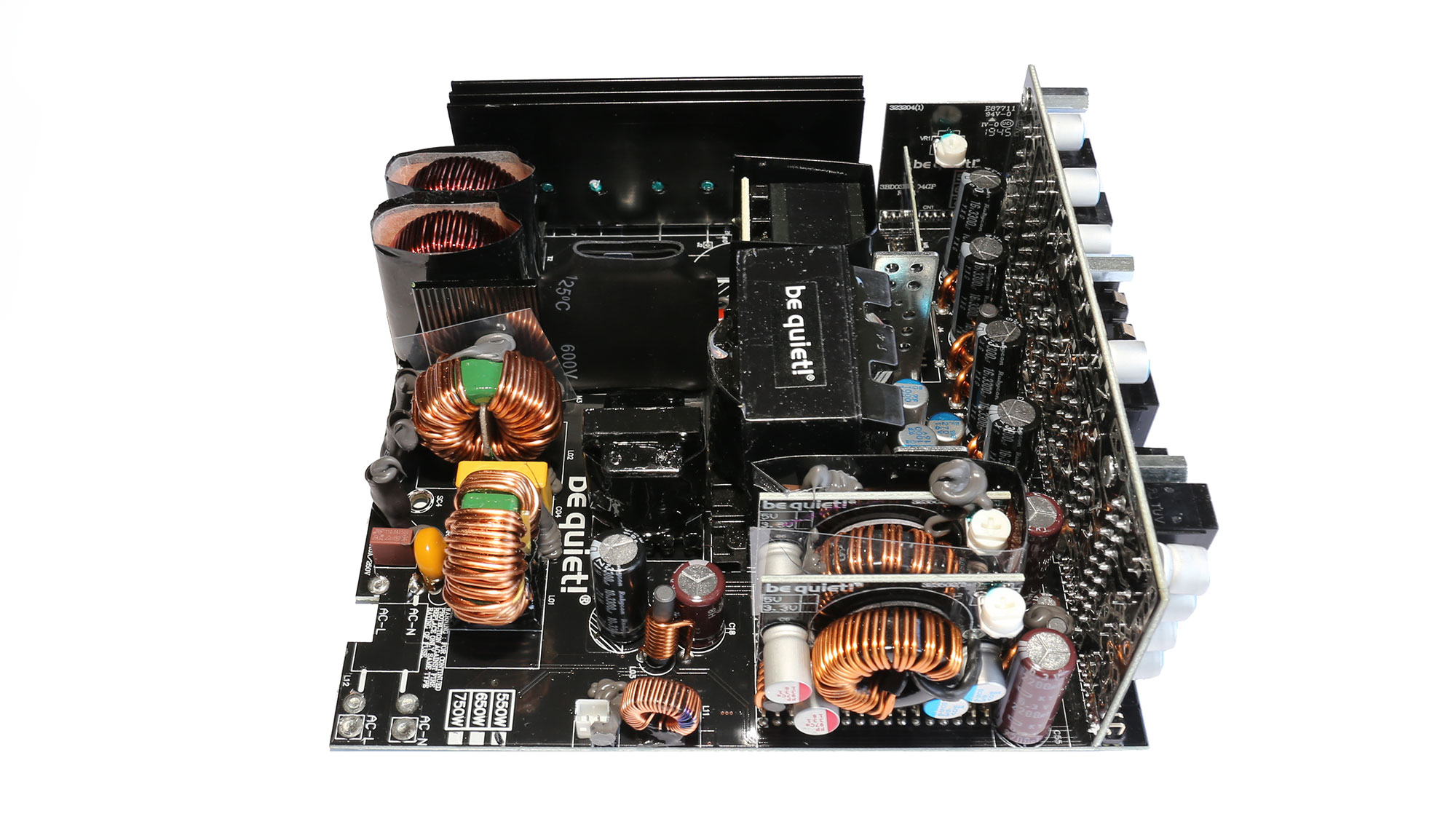


This is FSP's new platform, which we will soon see in the Hydro PTM Pro line. It uses a full-bridge topology on the primary side, along with an LLC resonant converter for increased efficiency. The secondary side includes the usual: a synchronous design for the +12V rail and voltage regulation modules for the minor rails. The parts that FSP used are of high quality, especially the bulk caps, and the design is clean, without any cables obstructing the airflow. The increased clearance between the parts also enhances the airflow. Only the DC-DC converters are installed side by side, but those parts are not highly stressed in real-life conditions, and they use several FETs, which share the load.
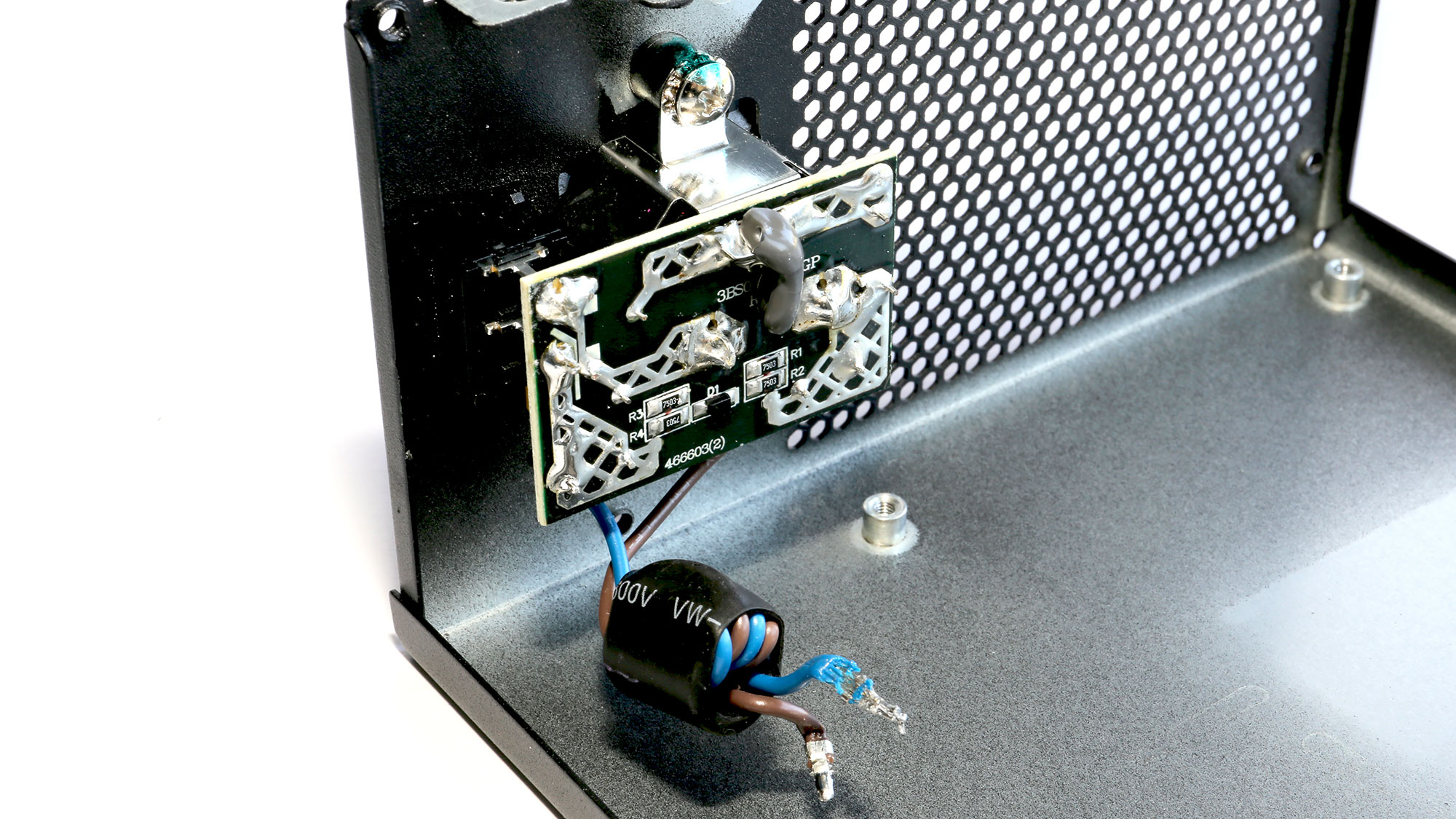
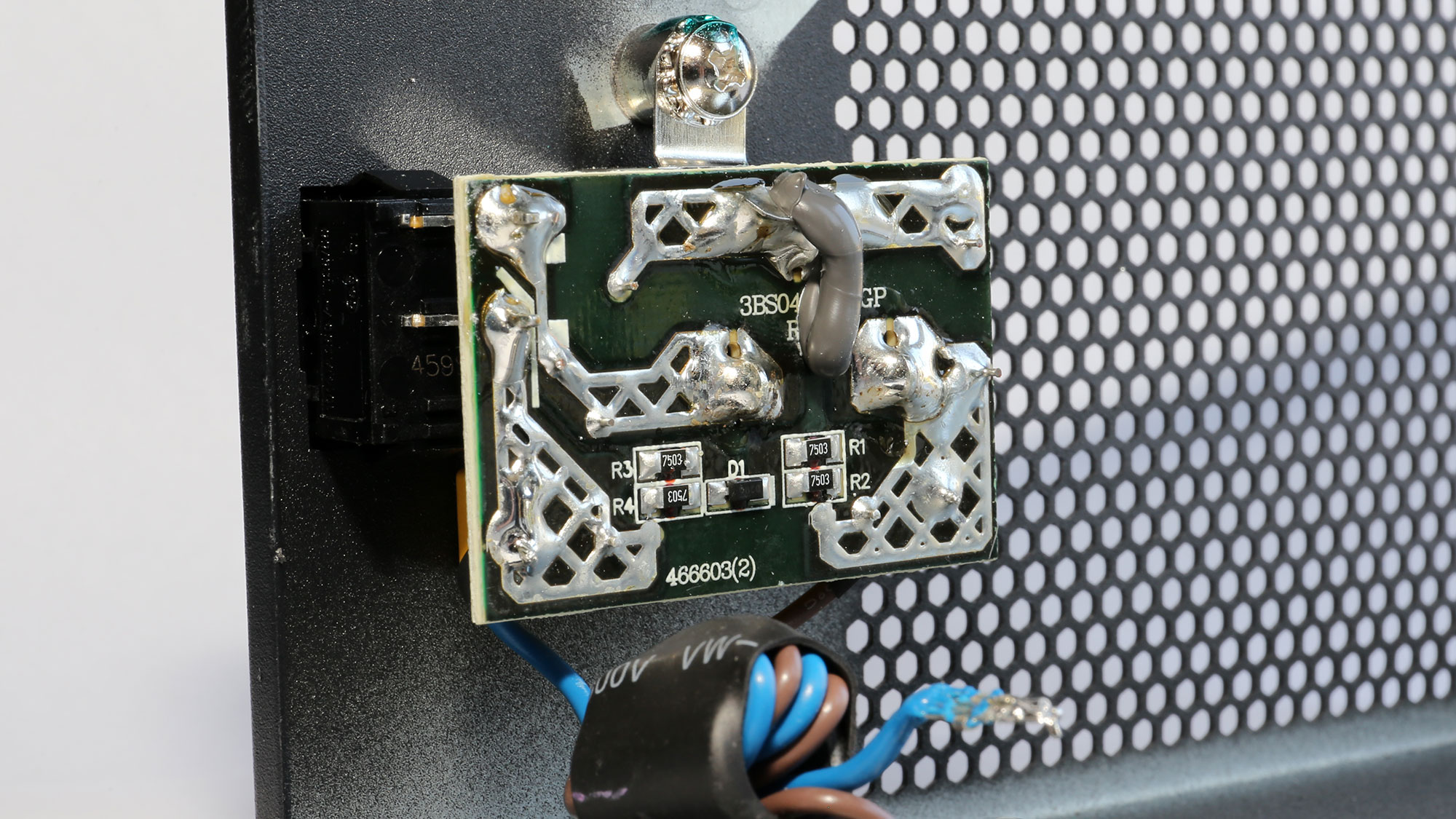
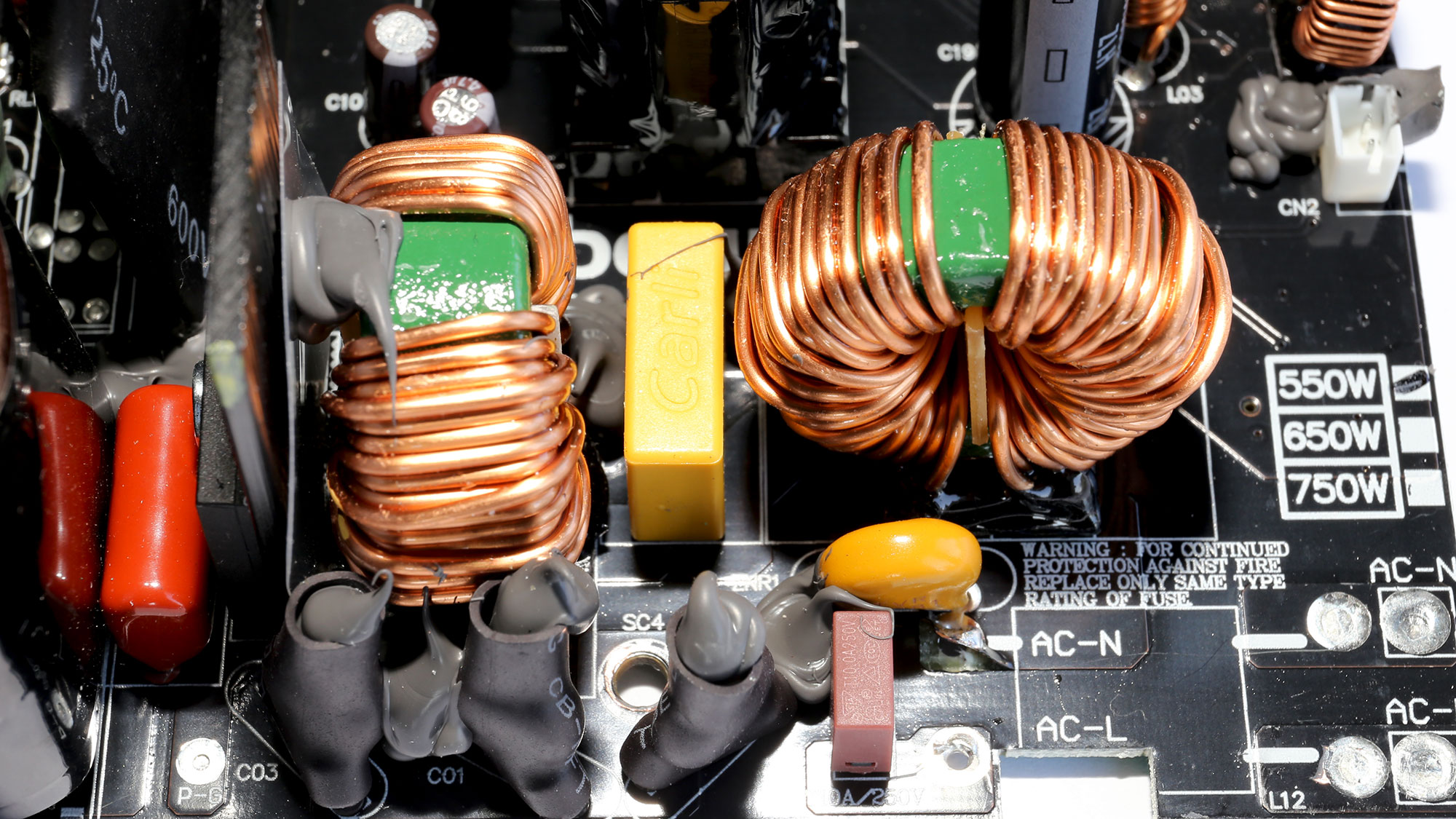

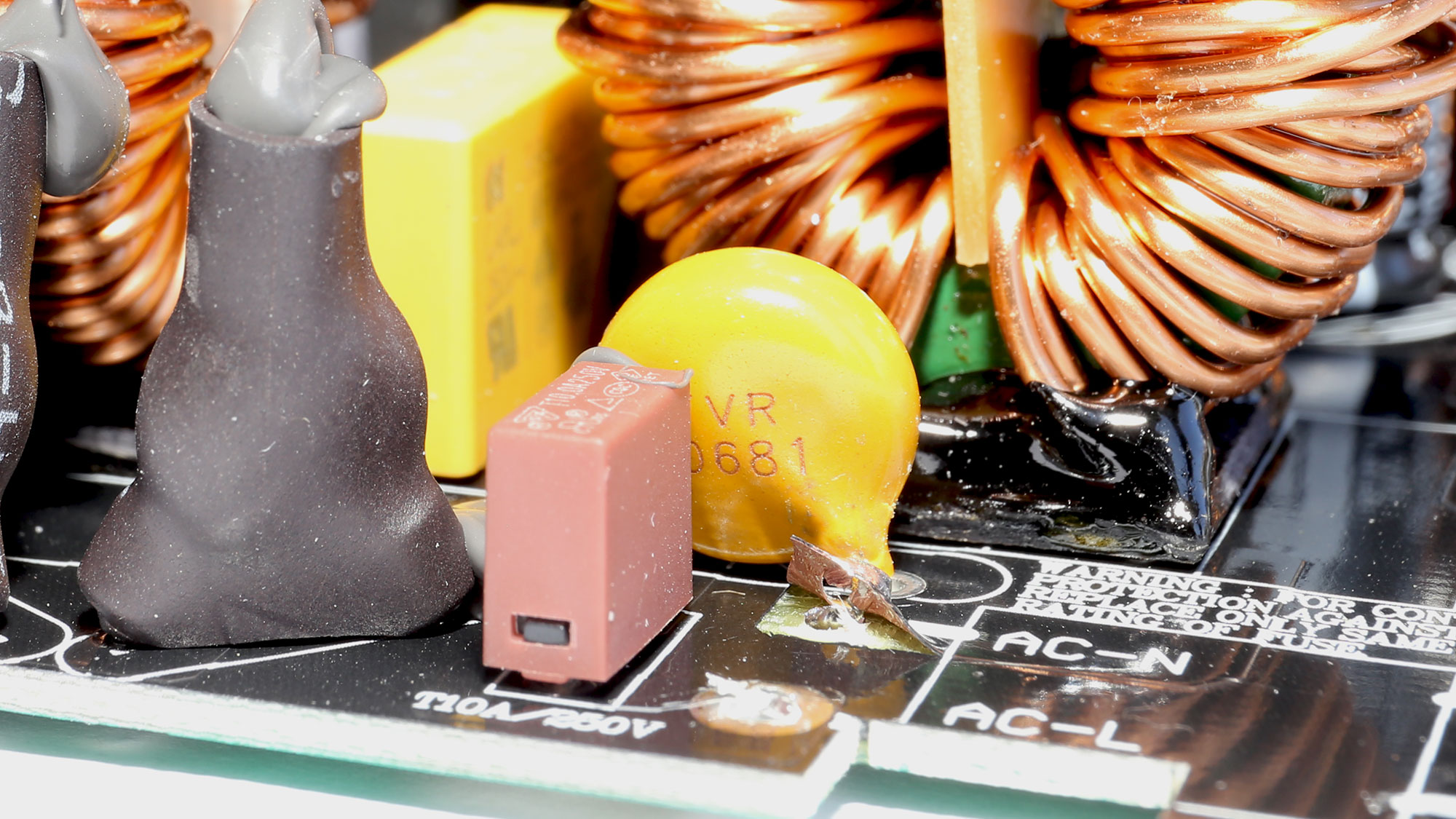
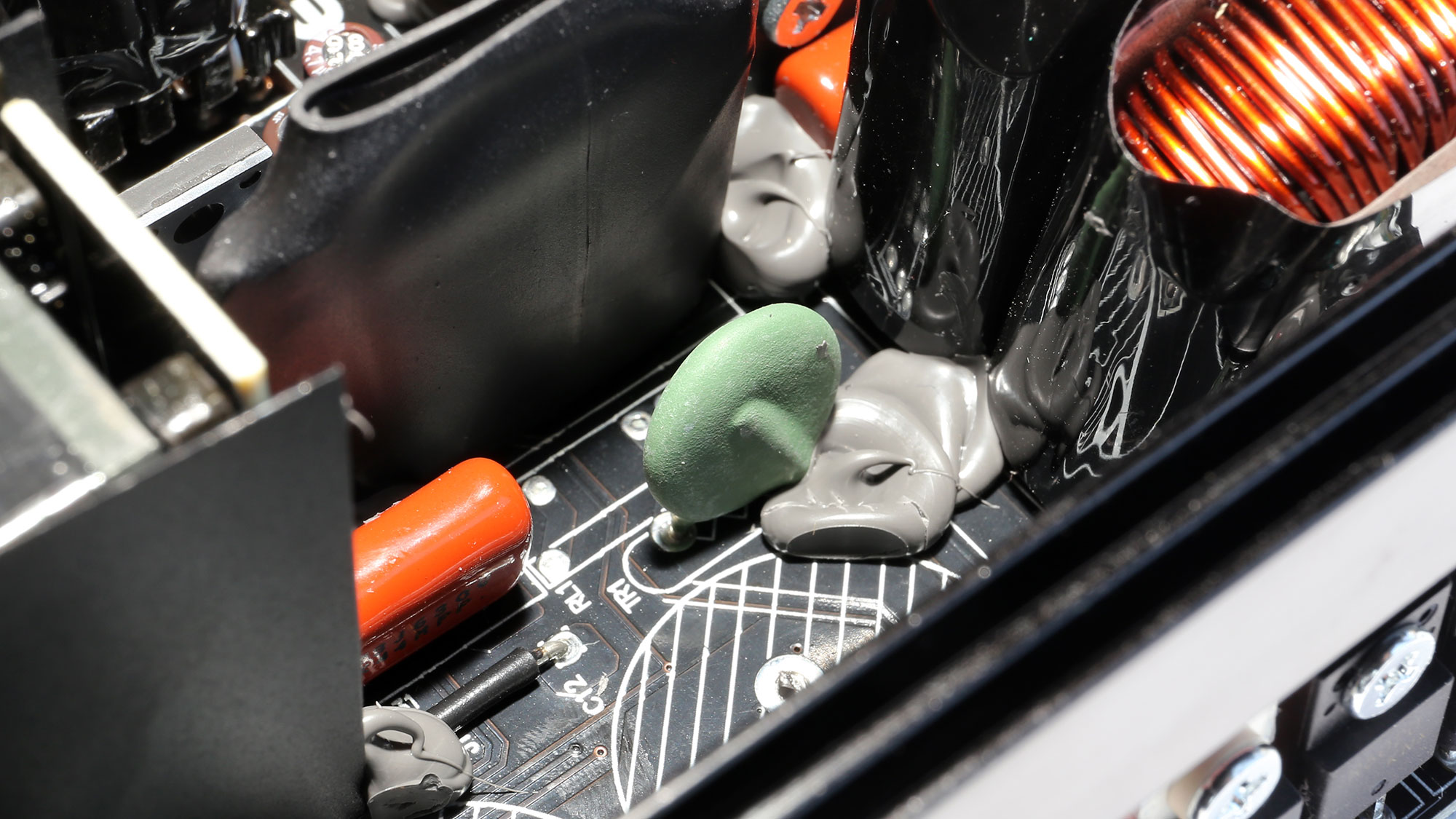
The transient filter is complete and does a pretty good job, according to our test results.
Since the PSU's capacity is low, there is no need for a pair of bridge rectifiers. Nonetheless, two bridges could increase efficiency, especially under high loads.

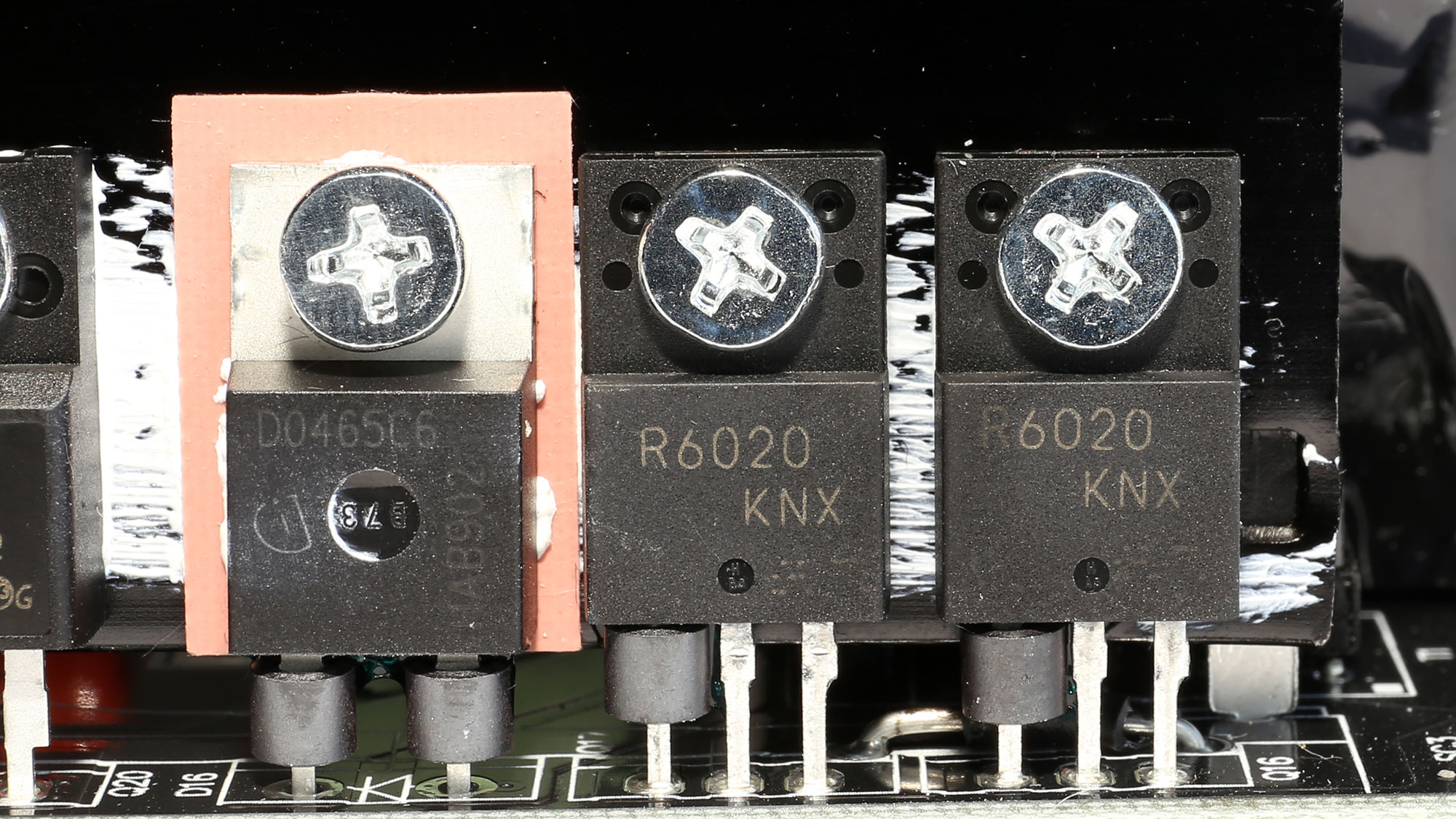
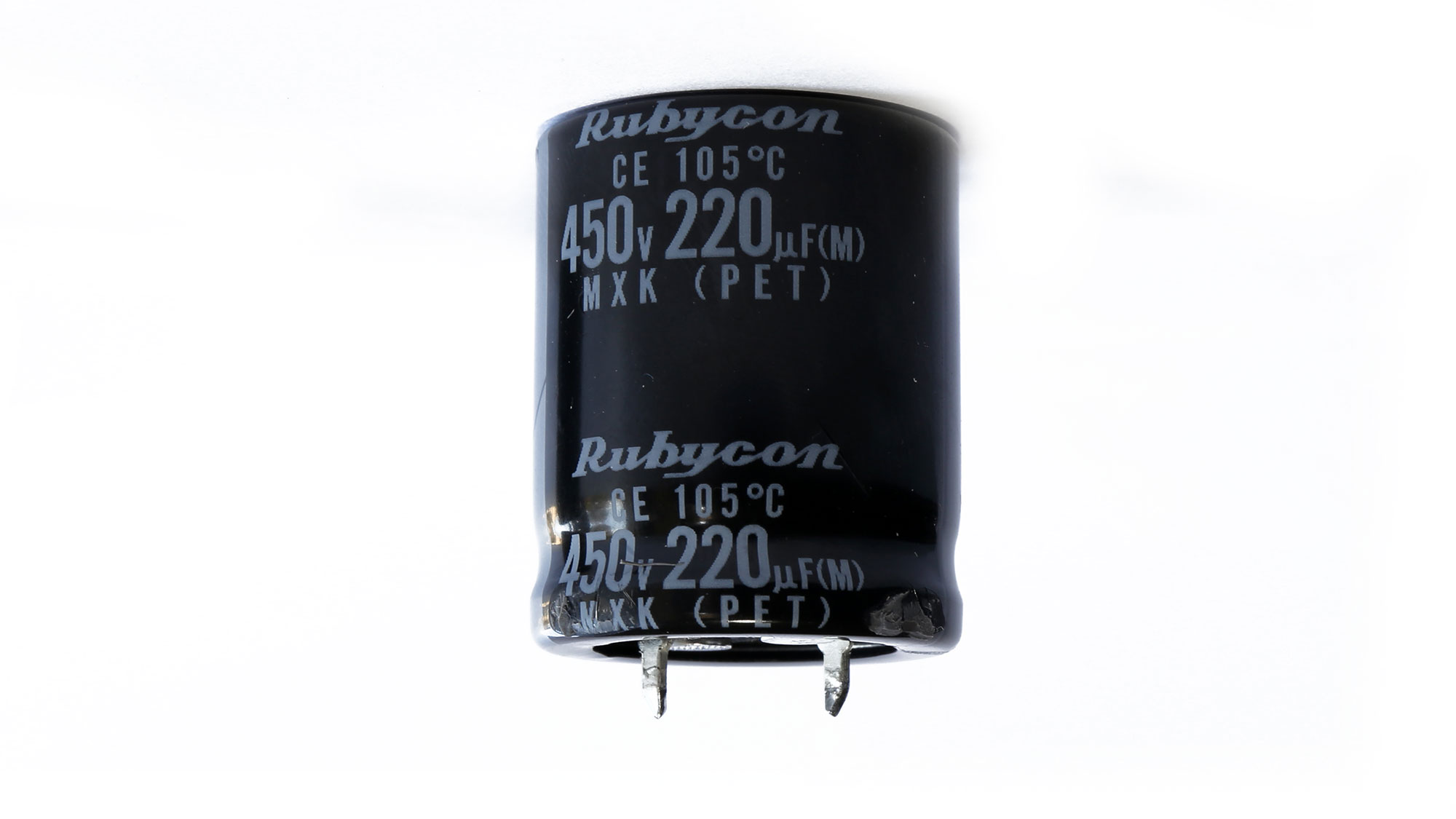
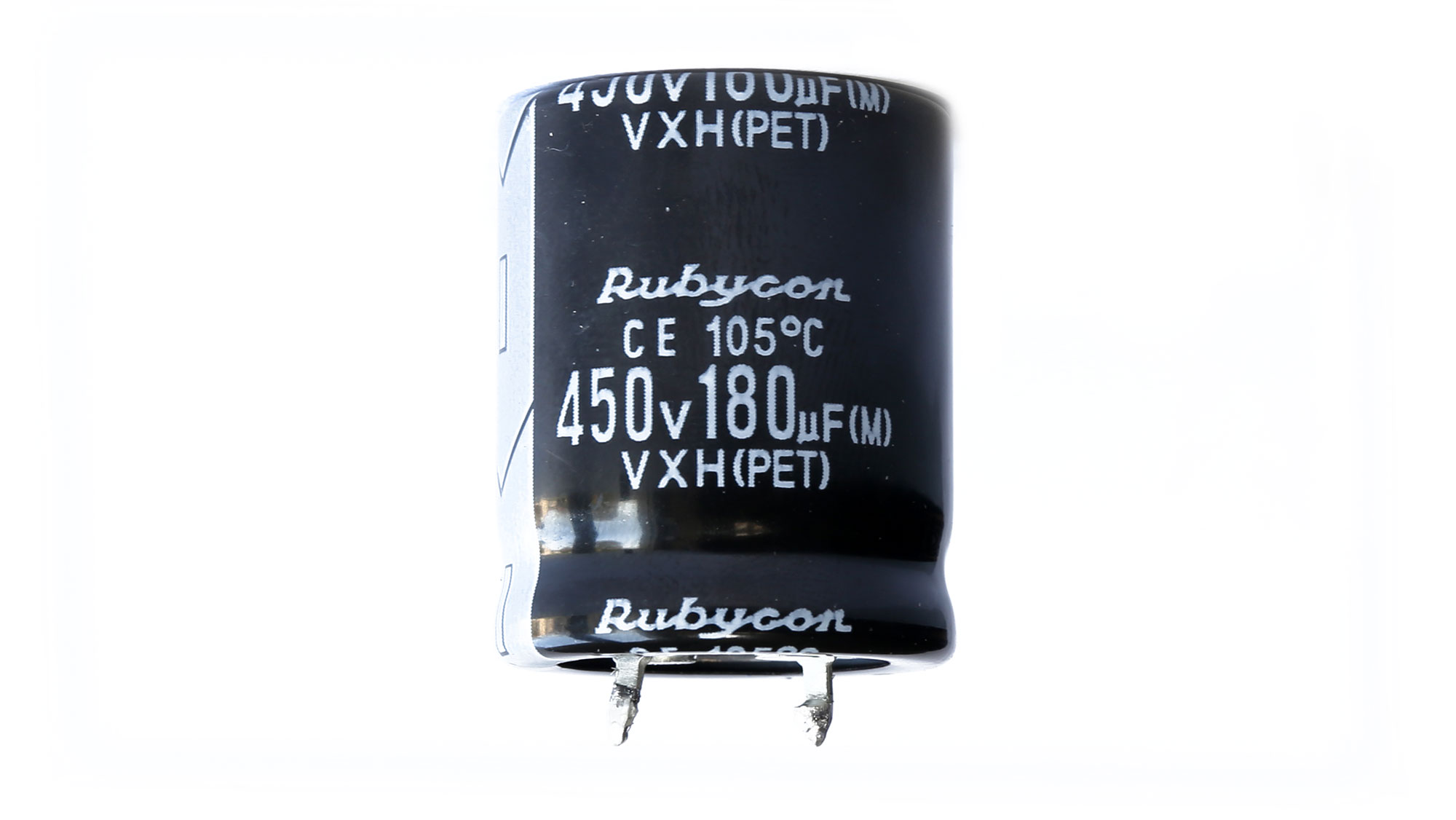

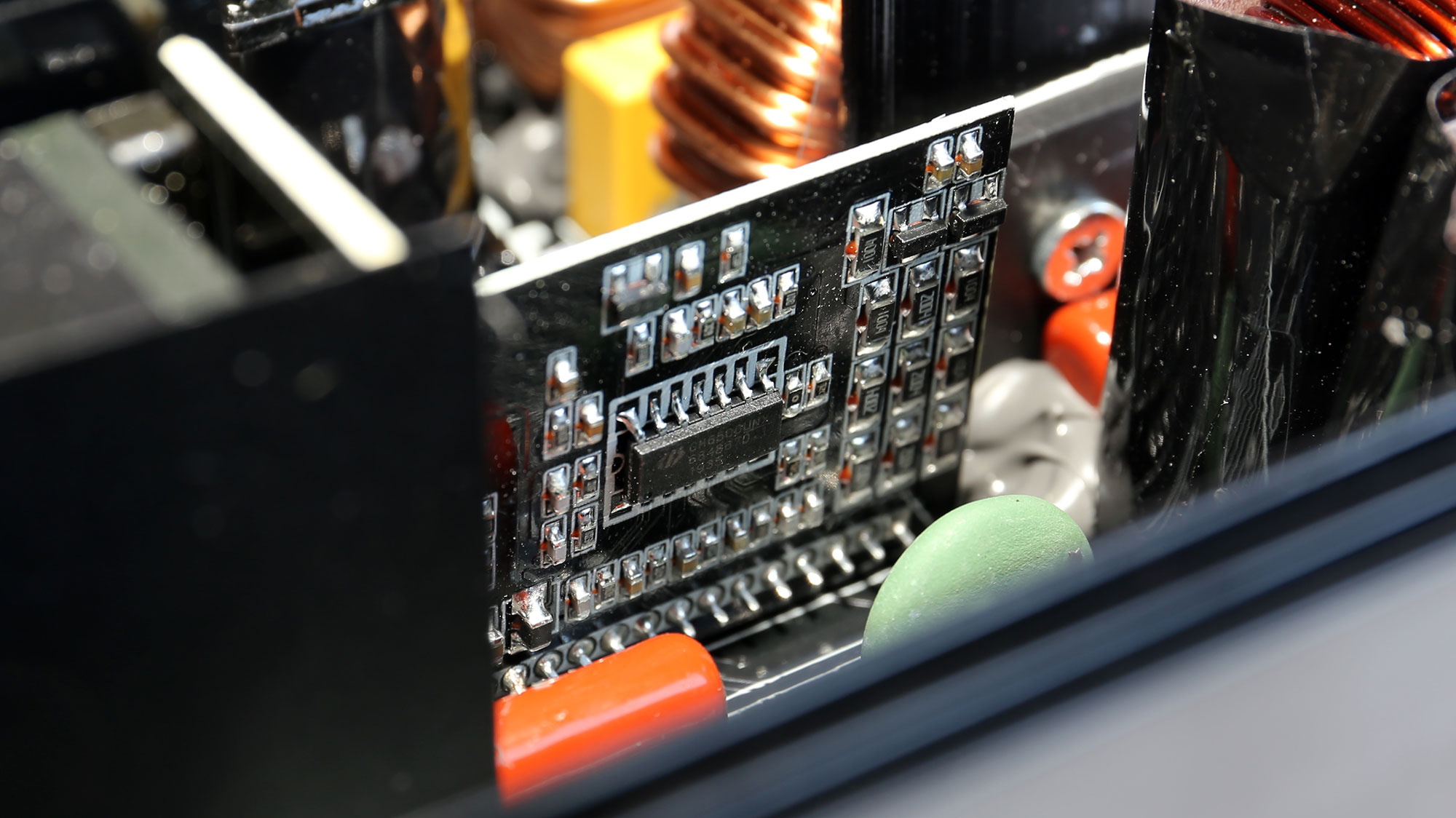
The APFC converter uses two ROHM FETs and an Infineon boost diode. The bulk caps are provided by Rubycon and are of extra-high quality. This is the first time we see a 5000h bulk cap on a desktop PSU. Usually, even high-end platforms use 2000h bulk caps. Finally, the APFC controller is a Champion CM6500UNX IC.
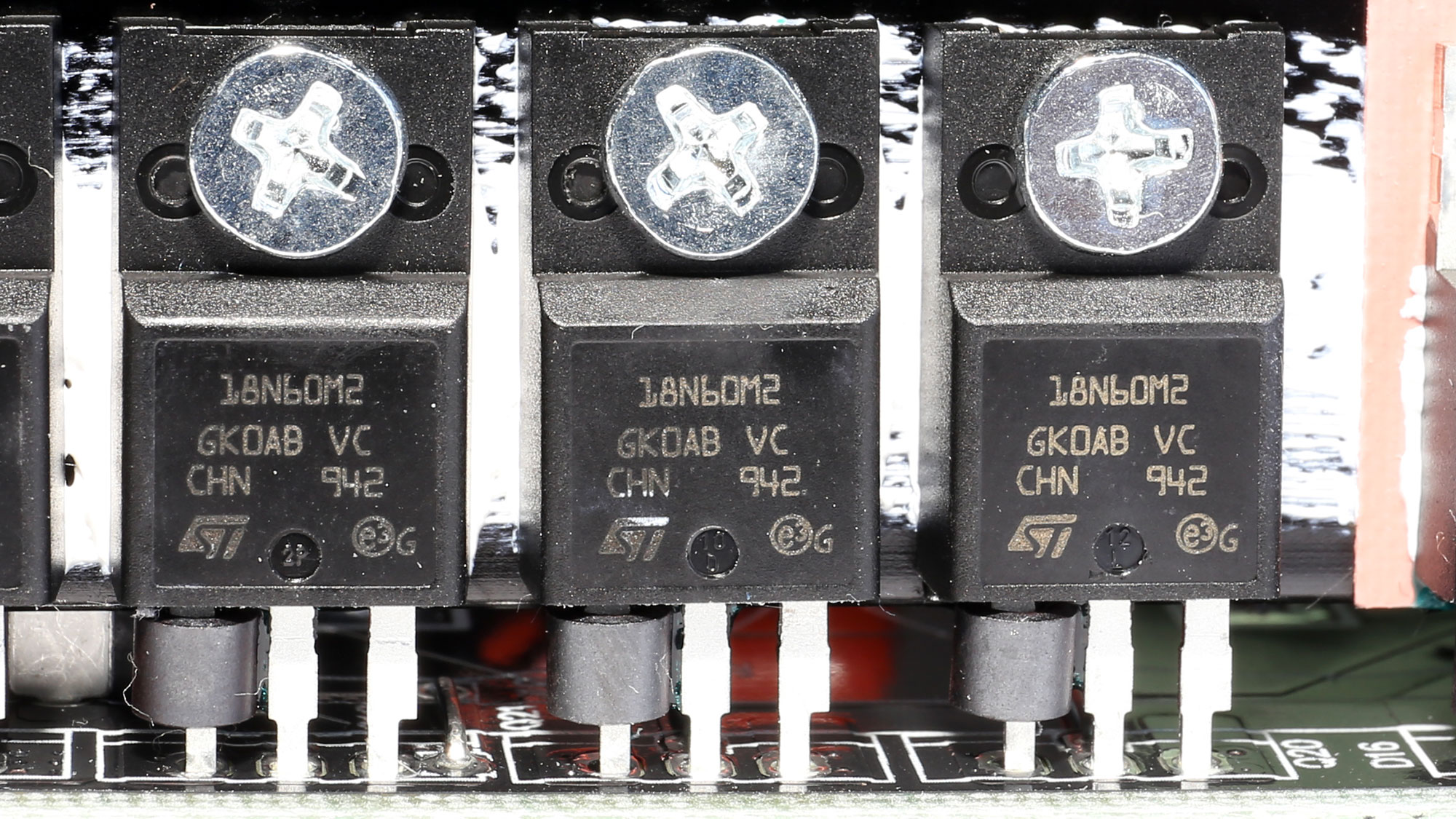
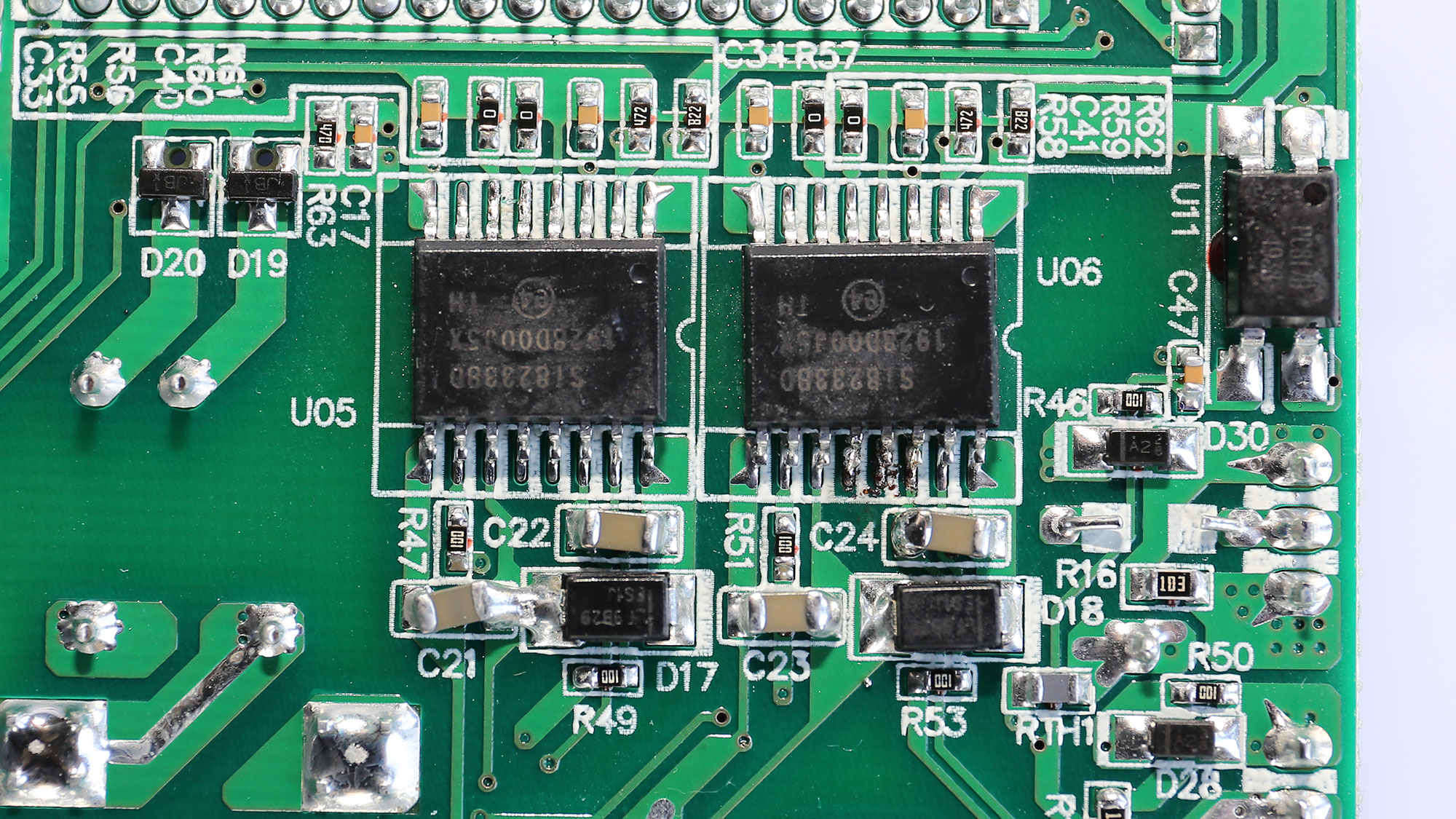
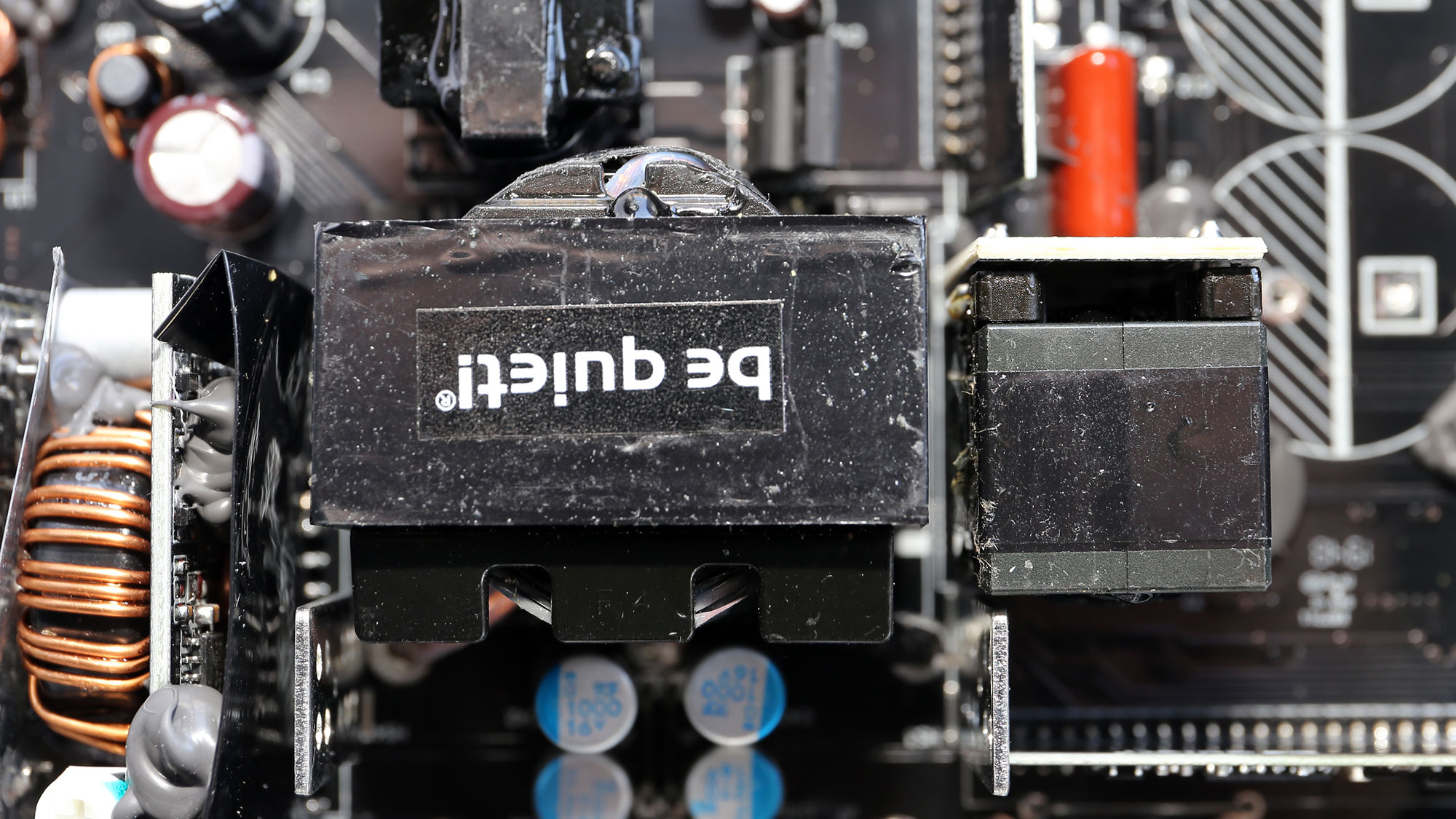

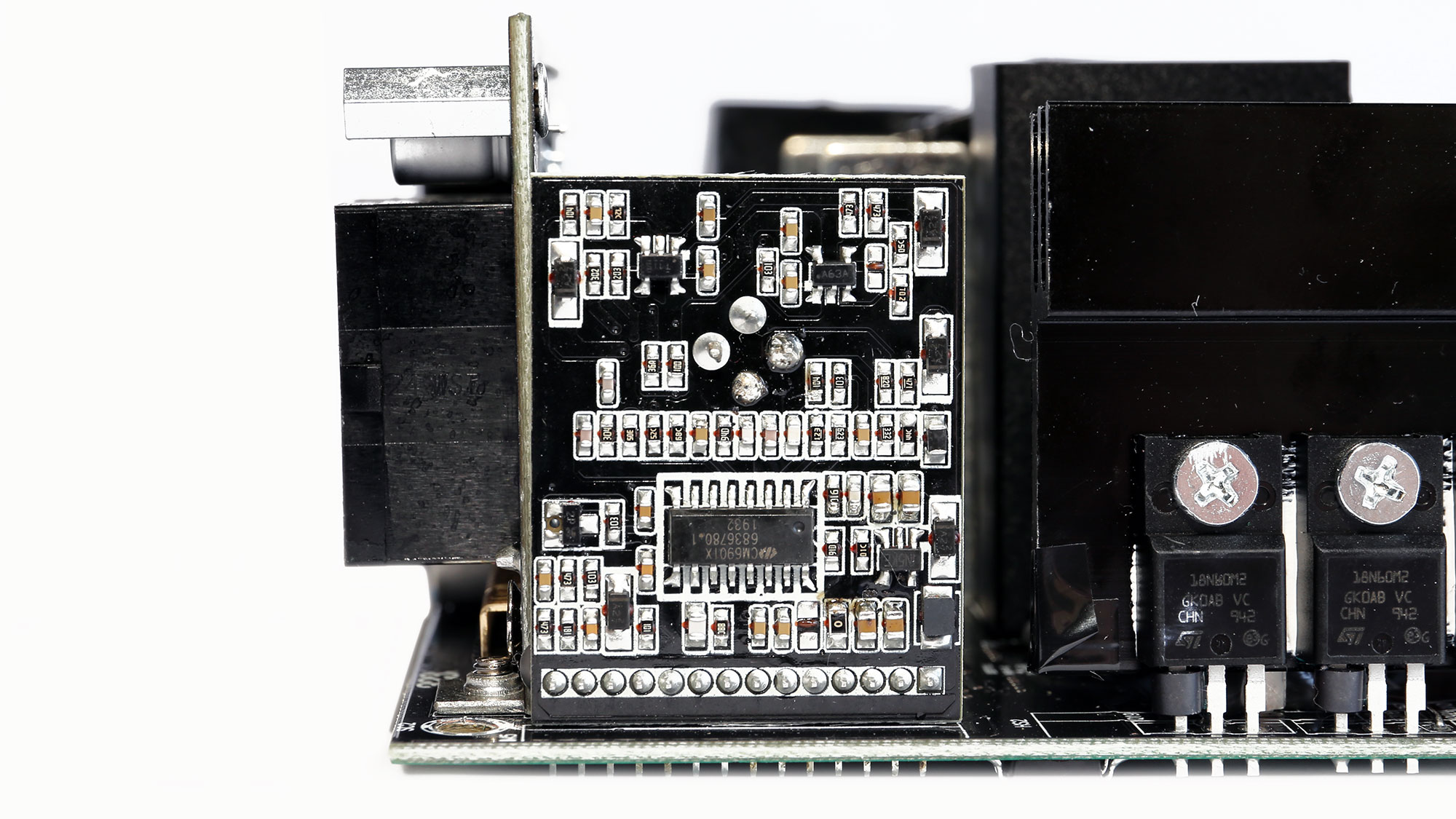
The four STMicroelectronics FETs are installed on a full-bridge topology. An LLC resonant converter is also used to restrict switching losses. The primary FETs are controlled through a pair of Si8233BD drivers.
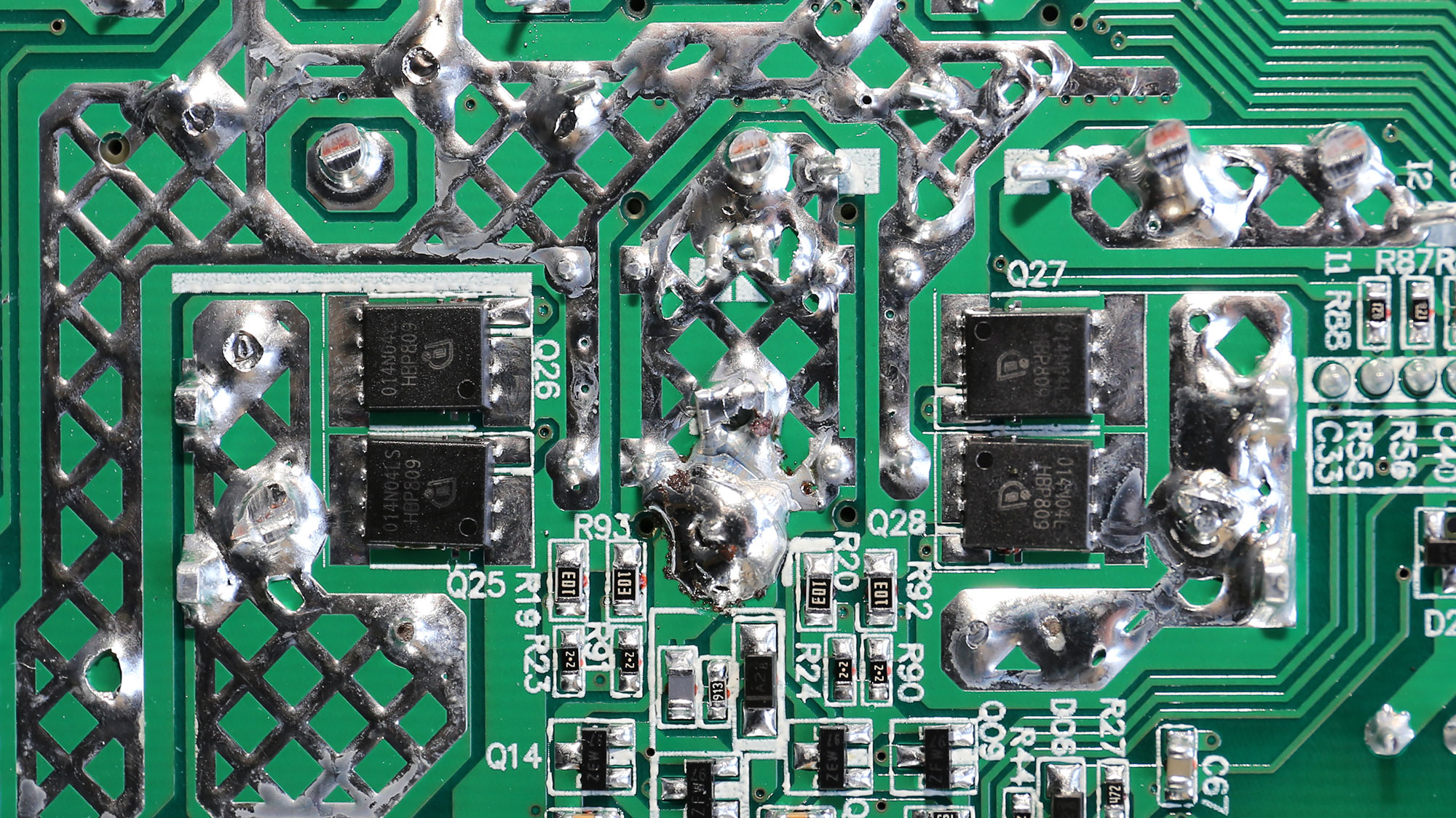

All four FETs that regulate the +12V rail, are installed on the solder-side of the PCB. The DC-DC converters that generate the minor rails are hosted on two vertical daughter-boards, which are installed side-by-side.

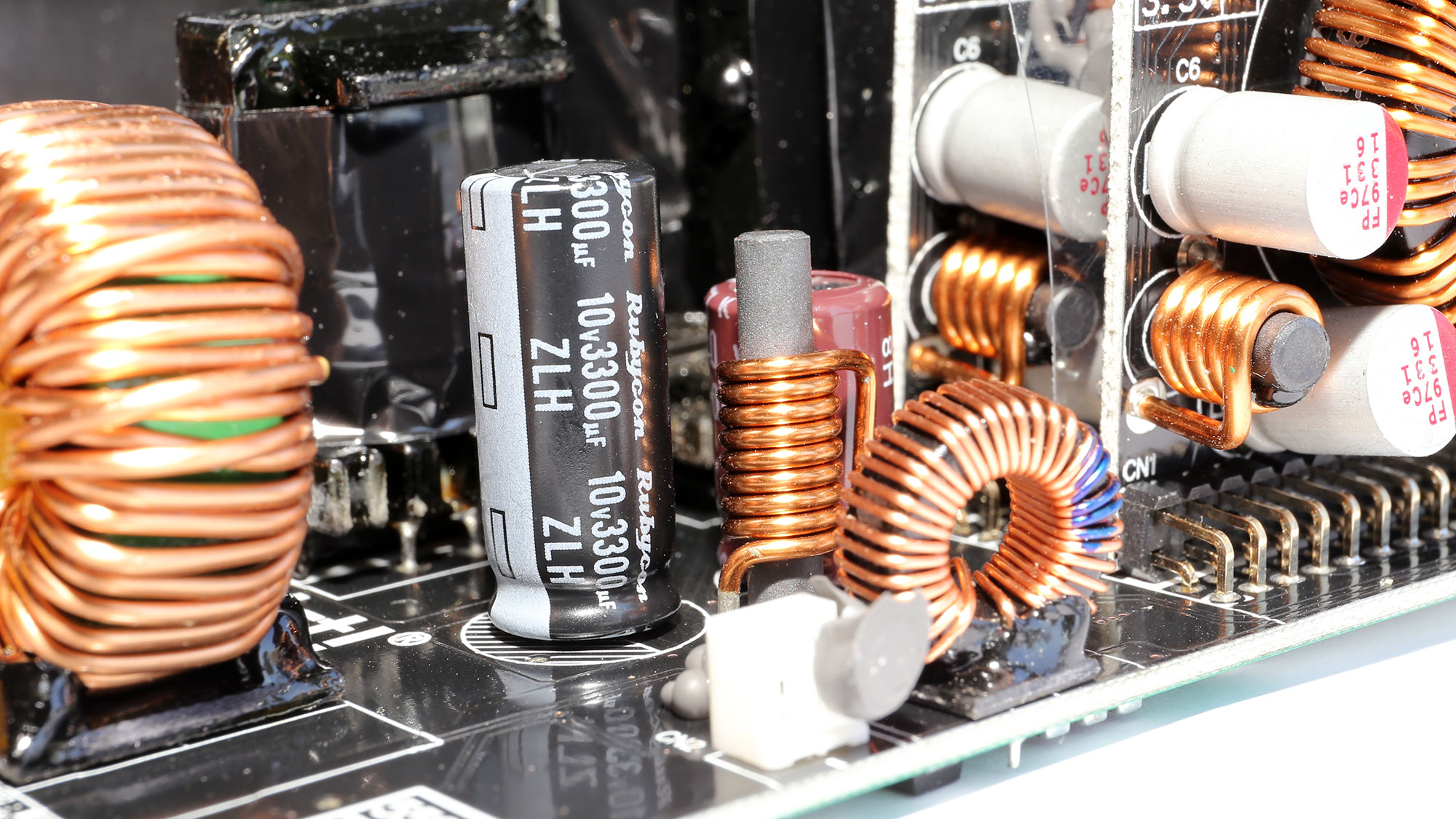
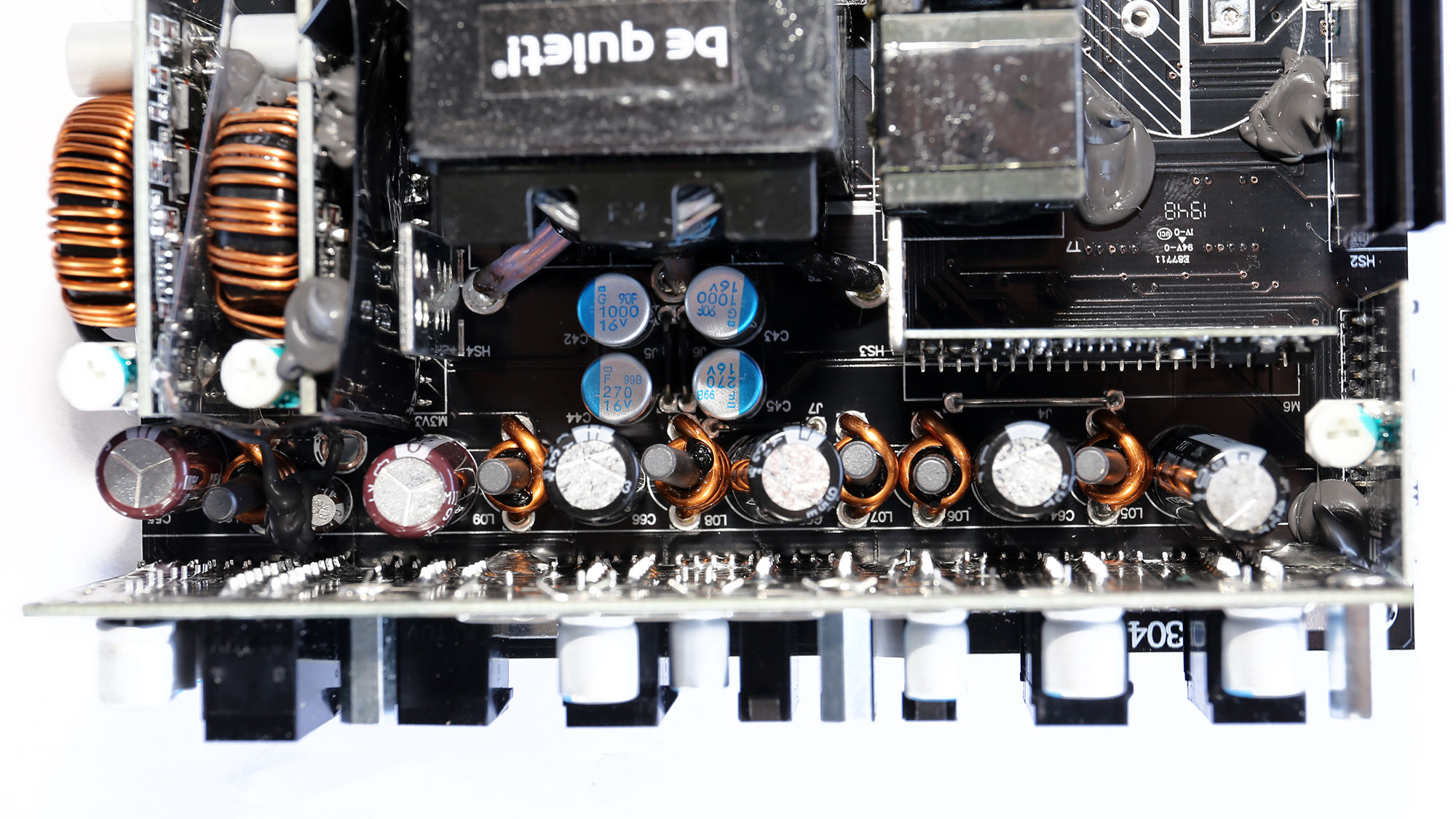
There are not many electrolytic caps, since FSP used a large number of polymer ones. Still, the few electrolytic caps are of high quality.
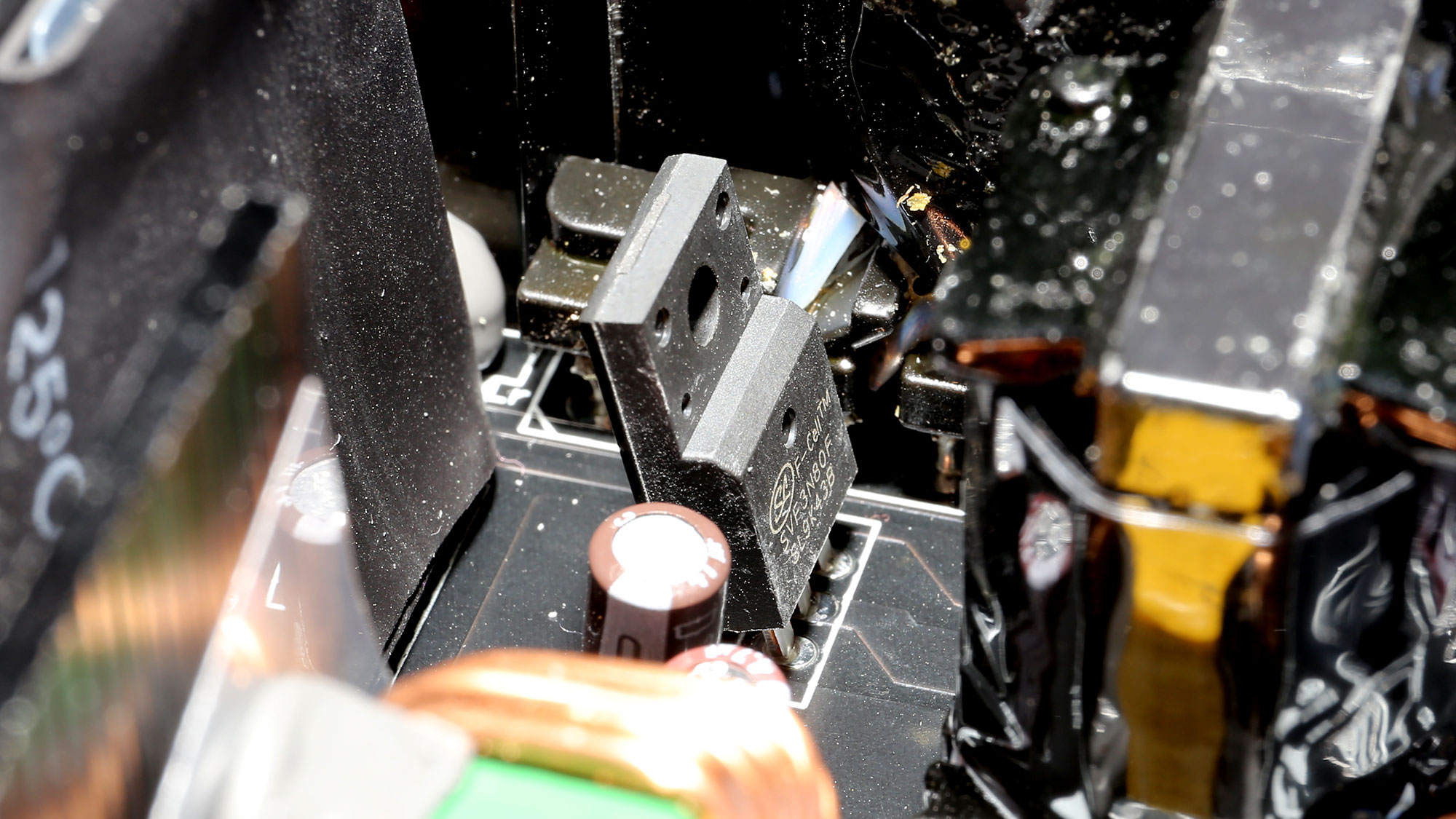

The 5VSB circuit uses a SVF3N80F FET on its primary side, and the standby PWM controller is provided by Leadtrend.
The supervisor IC is a Weltrend WT7527 which supports, out of the box, all necessary protection features, but OTP (Over Temperature Protection).
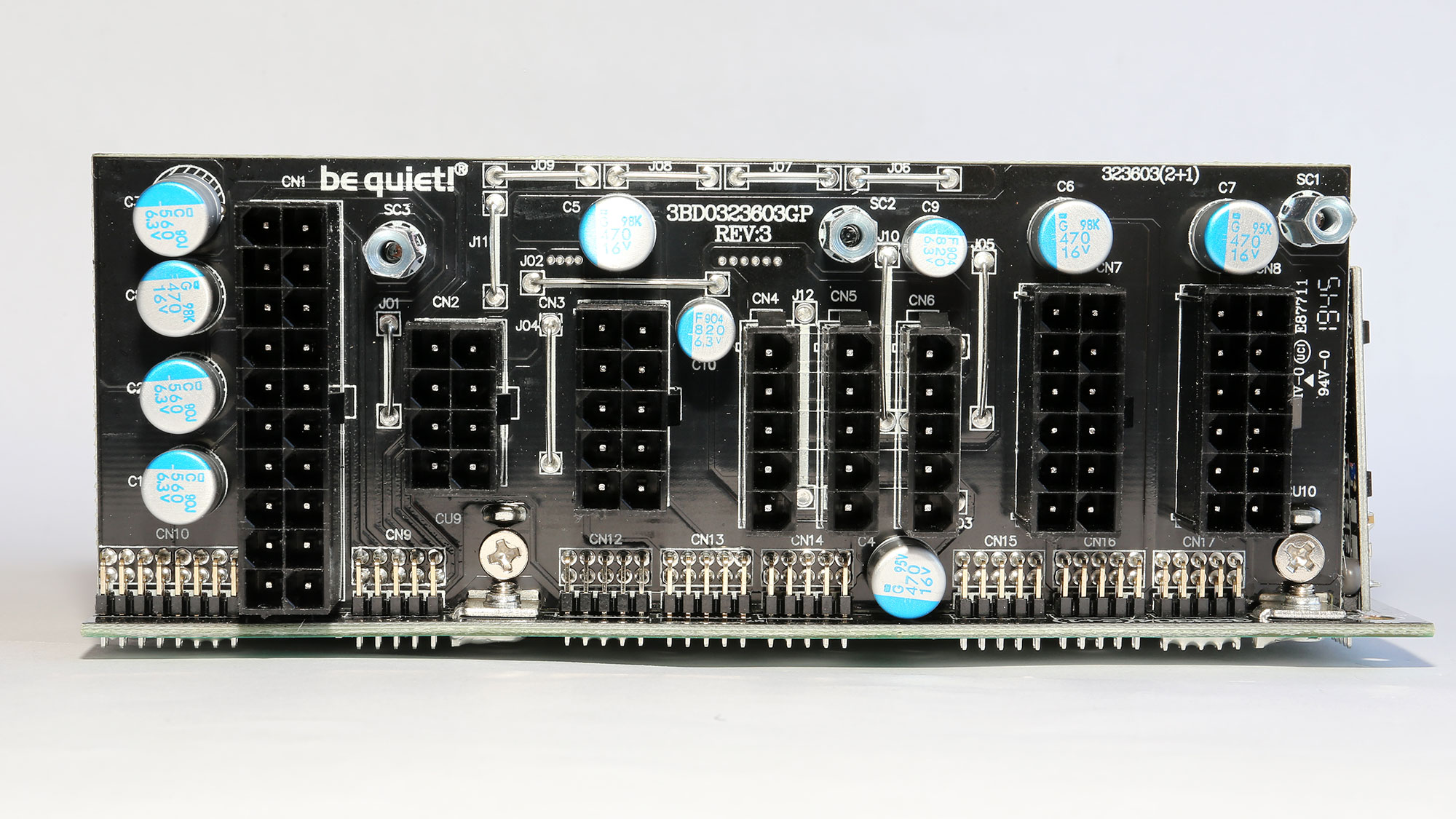
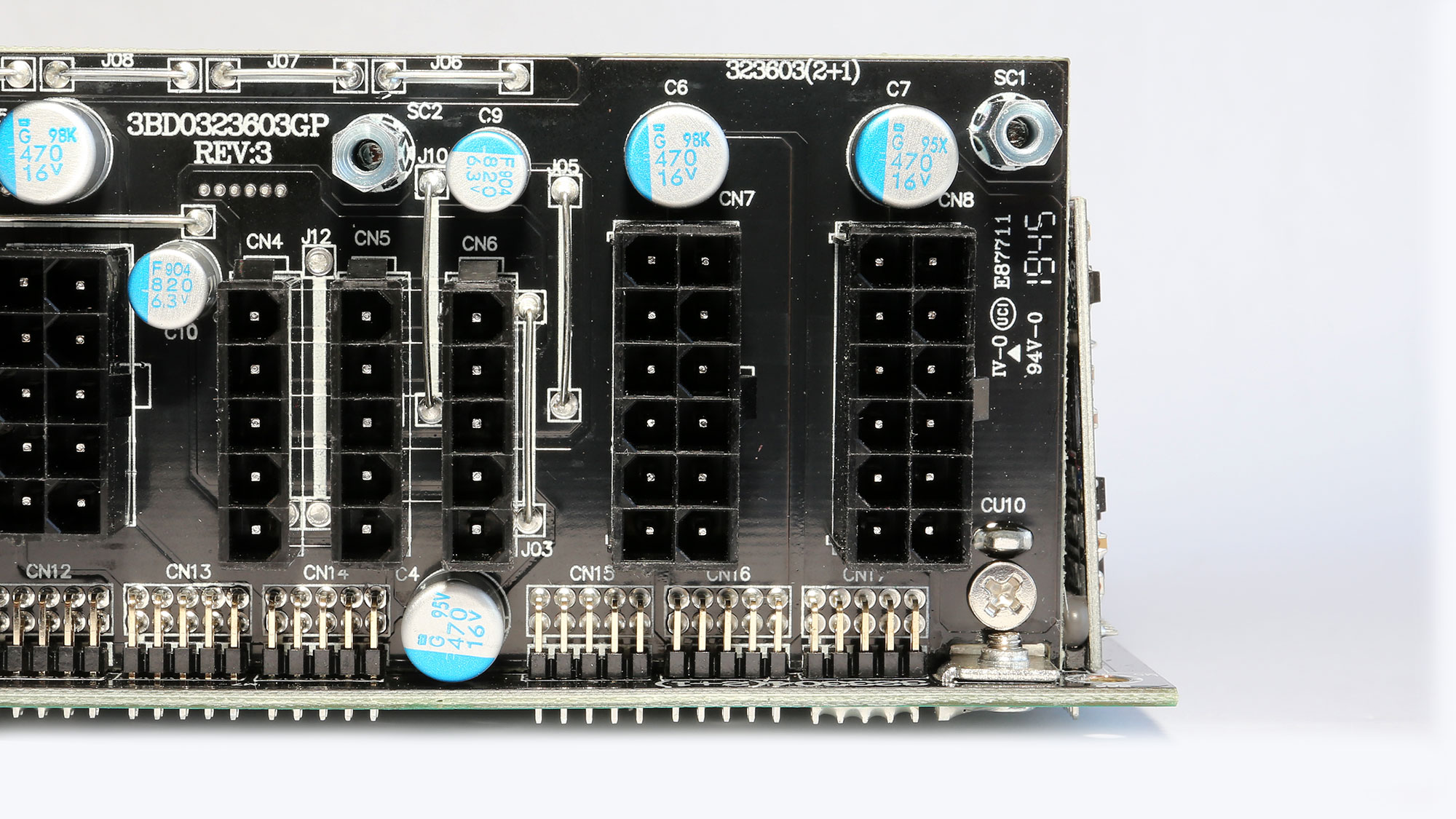

The face of the modular board hosts several polymer caps.
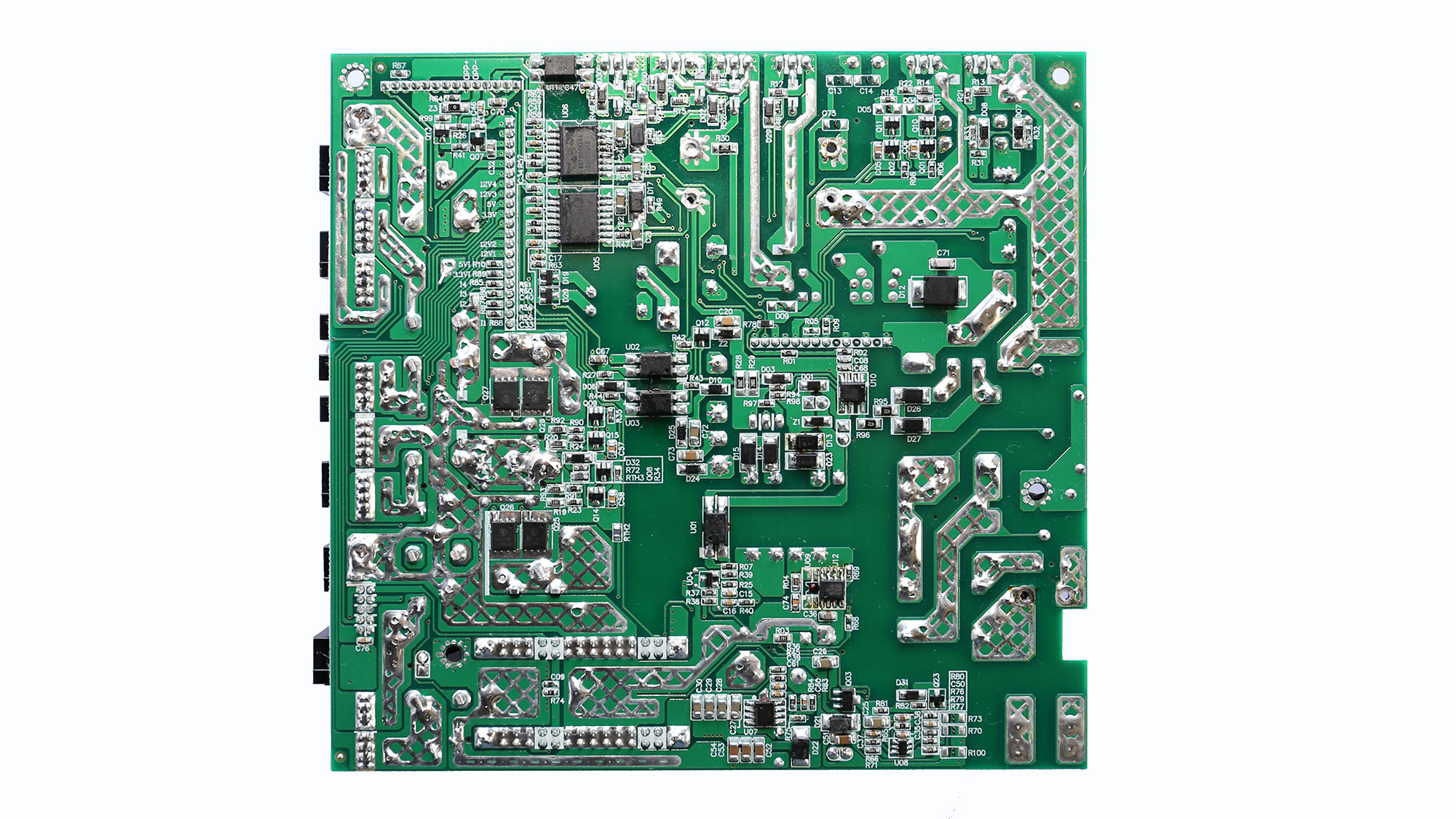

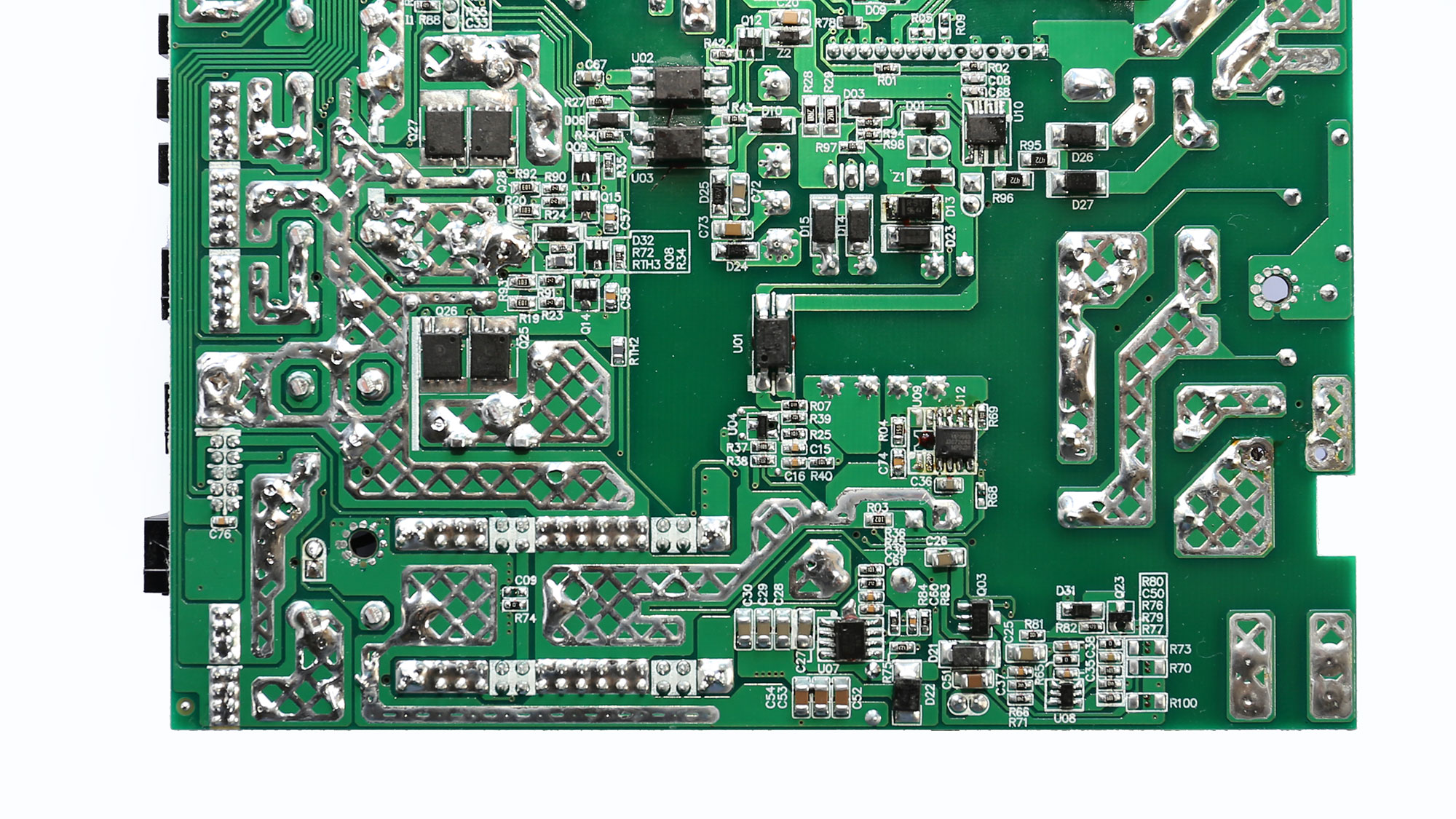
The soldering quality is average, since in some areas the soldering joints look sloppy. Nevertheless, this won't affect performance.
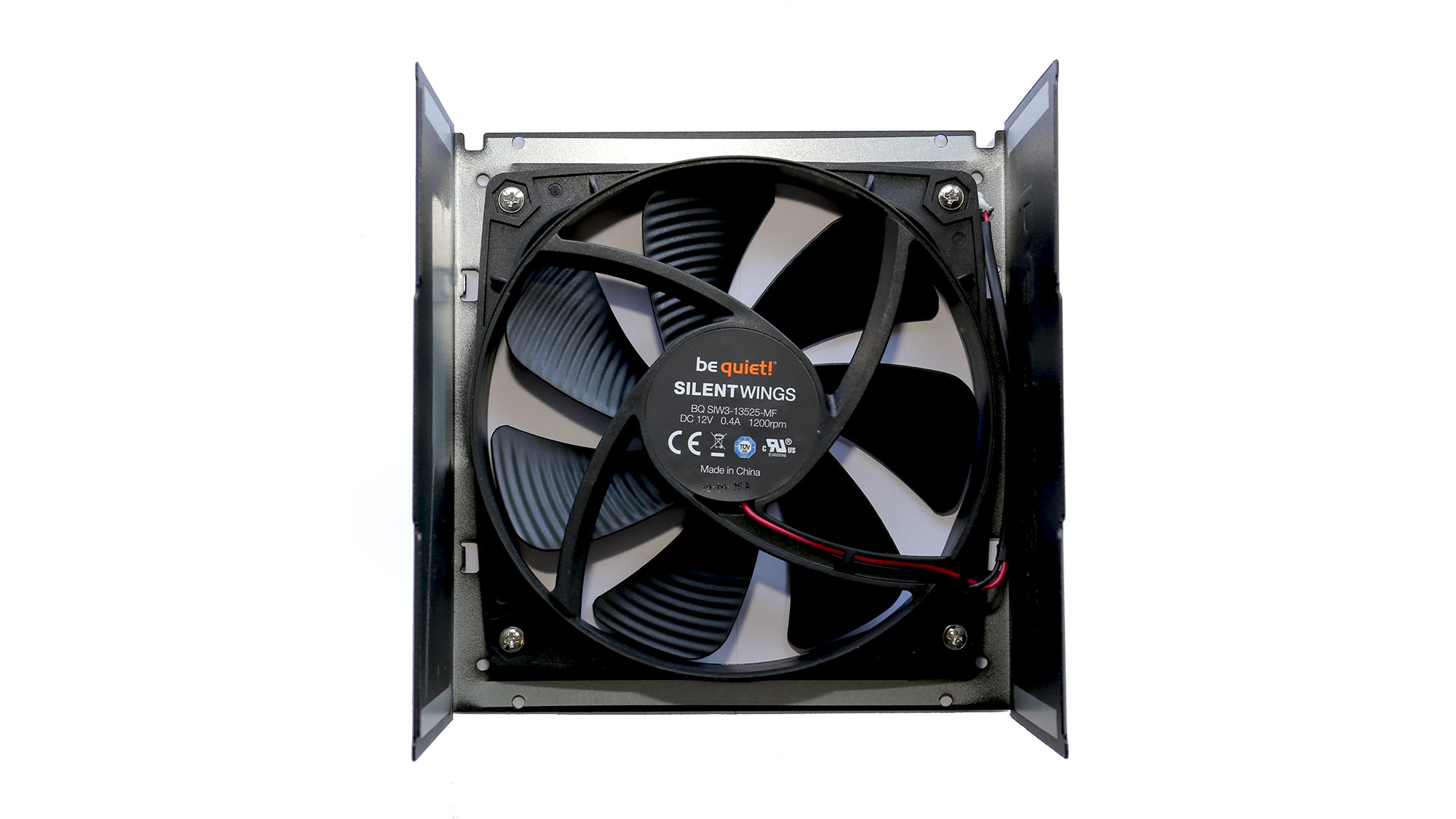
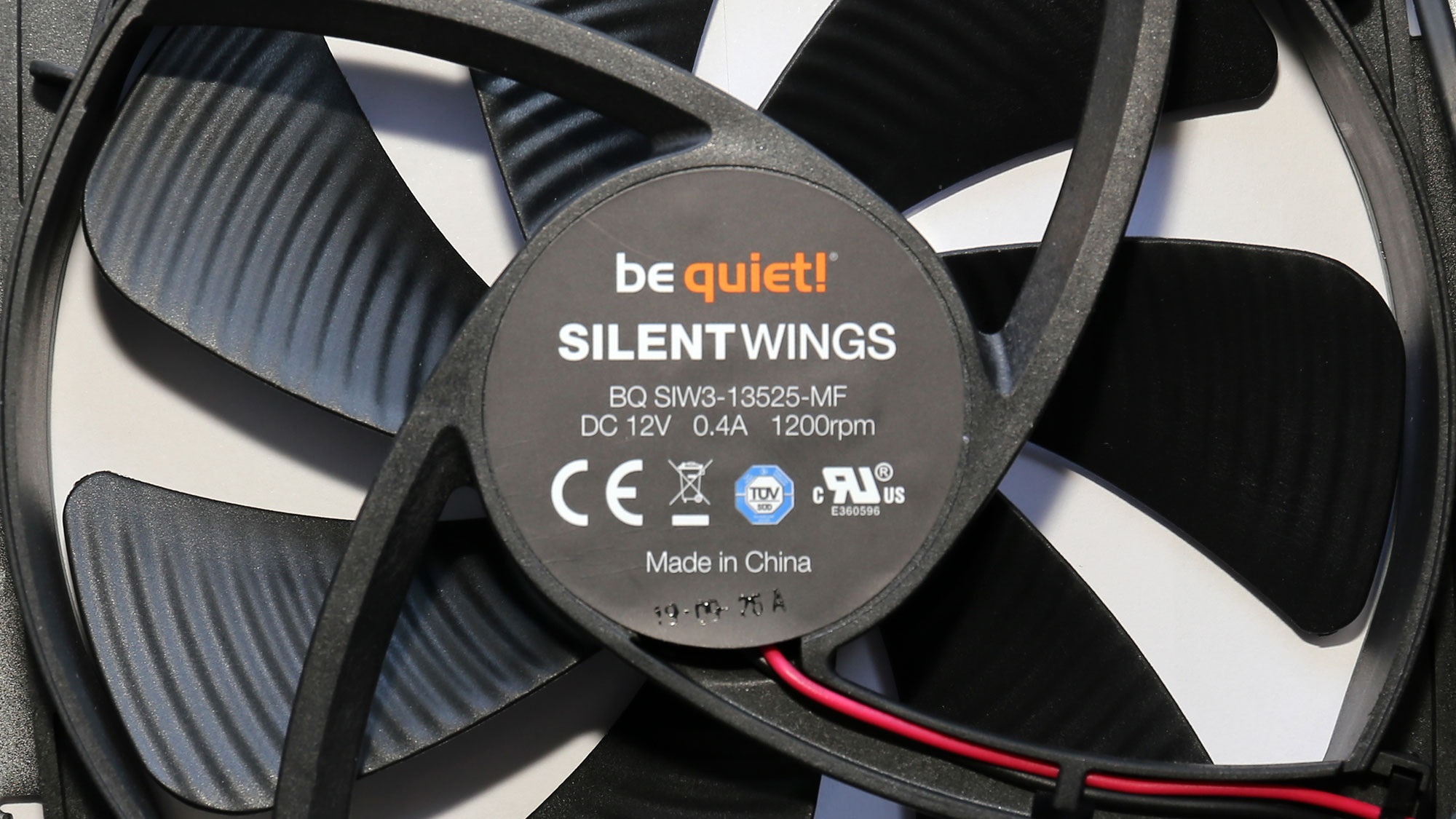

The cooling fan uses a fluid dynamic bearing and it is driven by a highly-relaxed speed profile.
MORE: Best Power Supplies
MORE: How We Test Power Supplies
MORE: All Power Supply Content
Current page: Specifications and Part Analysis
Next Page Load Regulation, Hold-Up Time, Inrush Current, Efficiency and Noise
Aris Mpitziopoulos is a contributing editor at Tom's Hardware, covering PSUs.
-
JohnBonhamsGhost how can it be both;Reply
+ FORCompatible with the alternative sleep mode
&
- AGAINSTNot compatible with the alternative sleep mode
?? -
chaz_music Great write up, Aris.Reply
I was not aware that the Intel PSU specs were coming out this summer (July 2020), which is great. BTW, take a look at the ripple graph on page 3. I think the Y axis is labelled wrong. Also, why no data on the 115VAC holdup? That is critical for people using this PSU with a standard UPS. Most of desktop UPS systems (think: inexpensive) are standby / line interactive and have a change over relay with transfer times in the 4-20mSec time range. Any PSU that is lower than that will have problems keeping the CPU alive during an outage. Too bad there is not a signal from the PSU to the CPU to power back. That signal could be used everywhere to cause SSDs and RAID arrays to go into save mode, and other subsystems to power down (Ethernet, USB, audio, etc.).
The Cybernetics Labs testing methods are spot on for the "how and why". There are minor tweaks that I would make, but overall, excellent testing methodology. The UPS market has cheated on efficiency for decades by testing a cold UPS for the product documentation. Everything should be at thermal steady state for true efficiency numbers, and at realistic operating conditions. The only parts that benefit from being warm are the electrolytic caps, except for their lifetime. I believe it is still true that all electrolytic caps have a decrease in ESR as they get warmer, up to a point depending on the electrolyte used. Everything else gets worse efficiency with heat: MOSFETS, XFMR, filter inductors, etc.
It is good to see better efficiency numbers in lower power PSUs. I searched for along time on my NAS build for at least a 80+ gold rated 200-250W PSU. I finally found an FSP 250W unit that was in an SFX package. A great article would be one who has the better/best low power PSUs especially in the area of efficiency.
Several points that I believe get overlooked in thinking about efficiency:
How much energy are you going to use to cool the building that the PSU is in? Usually around 50% of the total PSU power used for the months that HVAC is being used. This also gets overlooked with cost comparisons for LED bulbs versus incandescent bulbs. The HVAC savings is enormous.
The concept that the payback period for a higher cost efficient PSU does not give good ROI. I reuse most of my PSUs unless the caps look poor or I have had it being used at over 50-60% rated power for much of its life. With PSU getting warranties of 5years+, the added cost should be amortized over a longer period. Maybe over two chassis builds?
Thanks for the great article.
BR,
Charles -
Aris_Mp Reply
this is an obvious error. It IS compatible with the alternative sleep mode. Already asked to fix this.JohnBonhamsGhost said:how can it be both;
+ FORCompatible with the alternative sleep mode
&
- AGAINSTNot compatible with the alternative sleep mode
?? -
Aris_Mp Replychaz_music said:Great write up, Aris.
I was not aware that the Intel PSU specs were coming out this summer (July 2020), which is great. BTW, take a look at the ripple graph on page 3. I think the Y axis is labelled wrong. Also, why no data on the 115VAC holdup? That is critical for people using this PSU with a standard UPS. Most of desktop UPS systems (think: inexpensive) are standby / line interactive and have a change over relay with transfer times in the 4-20mSec time range. Any PSU that is lower than that will have problems keeping the CPU alive during an outage. Too bad there is not a signal from the PSU to the CPU to power back. That signal could be used everywhere to cause SSDs and RAID arrays to go into save mode, and other subsystems to power down (Ethernet, USB, audio, etc.).
The Cybernetics Labs testing methods are spot on for the "how and why". There are minor tweaks that I would make, but overall, excellent testing methodology. The UPS market has cheated on efficiency for decades by testing a cold UPS for the product documentation. Everything should be at thermal steady state for true efficiency numbers, and at realistic operating conditions. The only parts that benefit from being warm are the electrolytic caps, except for their lifetime. I believe it is still true that all electrolytic caps have a decrease in ESR as they get warmer, up to a point depending on the electrolyte used. Everything else gets worse efficiency with heat: MOSFETS, XFMR, filter inductors, etc.
It is good to see better efficiency numbers in lower power PSUs. I searched for along time on my NAS build for at least a 80+ gold rated 200-250W PSU. I finally found an FSP 250W unit that was in an SFX package. A great article would be one who has the better/best low power PSUs especially in the area of efficiency.
Several points that I believe get overlooked in thinking about efficiency:
How much energy are you going to use to cool the building that the PSU is in? Usually around 50% of the total PSU power used for the months that HVAC is being used. This also gets overlooked with cost comparisons for LED bulbs versus incandescent bulbs. The HVAC savings is enormous.
The concept that the payback period for a higher cost efficient PSU does not give good ROI. I reuse most of my PSUs unless the caps look poor or I have had it being used at over 50-60% rated power for much of its life. With PSU getting warranties of 5years+, the added cost should be amortized over a longer period. Maybe over two chassis builds?Thanks for the great article.
BR,
Charles
Hi Charles, and thank you for your comments.
The hold-up time is almost identical between 115V and 230V. The change is in the inrush current. I agree with you, the hold-up time is of immense importance.
CL ripple graph in page 3, I cannot find anything out of order.
If you have any suggestions on how to improve the Cybenetics methodology, they always hear opinions and are ready to make changes, if those are for the best.
About efficiency, diodes have lower voltage drops at increased temperatures as well, and this plays a major role especially in bridge rectifiers.
Thank you for the other two points you mention. Indeed the cost of dealing with the added thermal load of lower efficiency PSUs is significant. -
Co BIY Interesting cross-hatching (in solder?) on the back of the board in the FET and VRM photo.Reply
Can someone explain the purpose of that ? Heat Sink ? Heat dissipation ?
